May Day for EU trade bonanza

 FNigel Stirling MARKETS Trade
FNigel Stirling MARKETS Trade
AST legislative footwork from the new government looks set to result in an early start to New Zealand’s free trade agreement with the European Union, generating tens of millions of dollars in additional tariff savings for exporters.
The European Parliament ratified the agreement in November last year but its entry into force was delayed while its NZ counterpart took a break prior to last year’s general election.
Tariff savings estimated to be worth $100 million to exporters in the agreement’s first year have been on hold while parliamentarians worked their way through enabling legislation, which had its first reading only at the end of January.
Now Trade Minister Todd McClay has reached a deal to curtail the normal legislative process by missing out the legislation’s second reading when it returns to the House this Wednesday.
McClay said he expects a third and final reading and vote on the legislation the next day so that the following Monday it can be signed into law.
“We will notify the EU that on May 1 the tariff savings kick in, which for kiwifruit and onion
growers and a few others is important because their goods are on their way to that market right now.”
McClay said he had been advised the normally lengthier legislative process risked pushing the agreement’s start date, and the beginning of tariff savings for exporters, out to either August or September.
It is going to put us ahead of our main competitor Australia, who continue to pay the 9.6% tariff.
James Kuperus Onions NZ
He said he consulted with all of the parties represented in Parliament except Te Pati Māori, which voted against the legislation at its first reading.
“All of the parties agreed with me that this was significant enough as far as the savings for NZ exporters were concerned to speed the process up,” McClay said.
Tariffs took $46m out of $1 billion of kiwifruit marketer Zespri’s sales to the EU last year. Those tariffs will drop from 8.8% currently to zero on implementation of the FTA.
Zespri’s chief executive, Daniel
Continued page 4




$4.95

Govt calls it for dry top of the south
The government has declared Marlborough and Nelson drought conditions a mediumscale adverse event. But the situation is just as bad in the Hakataramea Valley, in South Canterbury, where farmers Hamish and Charlotte Bell say it will take several decent deluges for the area to recover.
NEWS 3

Management of DOC land called into question after vegetation fire in North Otago.
NEWS 5
In pursuit of one entity, one strategy
Wool advocate Tom O’Sullivan has left his role with Campaign for Wool, adamant he can do more through the commercial sector.
NEWS 4
Data, not a calendar, will determine the future of parasite management on NZ farms.
NEWS 8
NZ farm fertiliser market is in for a shakeup with the arrival of Aussie firm Marnco.
NEWS 9




















SCAN THE QR CODE TO LEARN MORE! www.tepari.com Maximize your farm’s productivity with Te Pari Handling Equipment! 0% INTEREST 1/3 IN 24 MONTHS 1/3 IN 12 MONTHS 1/3 DEPOSIT Farm efficiency starts here… 1
Photo: Dana Johnston
Vol 22 No 10, March 18, 2024 View online at farmersweekly.co.nz
Incl GST A reserve bank for the environment 14
EDITORIAL
Bryan Gibson | 06 323 1519
Managing Editor bryan.gibson@agrihq.co.nz
Craig Page | 03 470 2469
Deputy Editor craig.page@agrihq.co.nz
Claire Robertson
Sub-Editor claire.robertson@agrihq.co.nz
Neal Wallace | 03 474 9240
Journalist neal.wallace@agrihq.co.nz
Gerald Piddock | 027 486 8346
Journalist gerald.piddock@agrihq.co.nz
Annette Scott | 021 908 400
Journalist annette.scott@agrihq.co.nz
Hugh Stringleman | 09 432 8594
Journalist hugh.stringleman@agrihq.co.nz
Richard Rennie | 027 475 4256
Journalist richard.rennie@agrihq.co.nz
Nigel Stirling | 021 136 5570
Journalist nigel.g.stirling@gmail.com
PRODUCTION
Lana Kieselbach | 027 739 4295 production@agrihq.co.nz
ADVERTISING MATERIAL
Supply to: adcopy@agrihq.co.nz
SUBSCRIPTIONS
0800 85 25 80 subs@agrihq.co.nz
PRINTER
Printed by Stuff Ltd
Delivered by Reach Media Ltd
SALES CONTACTS
Andy Whitson | 027 626 2269
Sales & Marketing Manager andy.whitson@agrihq.co.nz
Andrew Fraser | 027 706 7877
Auckland/Northland Partnership Manager andrew.fraser@agrihq.co.nz
Jody Anderson | 027 474 6094
Waikato/Bay of Plenty Partnership Manager jody.anderson@agrihq.co.nz
Palak Arora | 027 474 6095
Lower North Island Partnership Manager palak.arora@agrihq.co.nz
Omid Rafyee | 027 474 6091
South Island Partnership Manager omid.rafyee@agrihq.co.nz
Julie Gibson | 06 323 0765
Marketplace Partnership Manager classifieds@agrihq.co.nz
Andrea Mansfield | 027 602 4925 National Livestock Manager livestock@agrihq.co.nz
Real Estate | 0800 85 25 80 realestate@agrihq.co.nz
Word Only Advertising | 0800 85 25 80 Marketplace wordads@agrihq.co.nz
PUBLISHERS
Dean and Cushla Williamson
Phone: 027 323 9407 dean.williamson@agrihq.co.nz cushla.williamson@agrihq.co.nz
Farmers Weekly is Published by AgriHQ PO Box 529, Feilding 4740, New Zealand
Phone: 0800 85 25 80
Website: www.farmersweekly.co.nz
ISSN 2463-6002 (Print)
ISSN 2463-6010 (Online)

News in brief
Synlait partnership
Synlait and Nestlé will partner up to fund on-farm emissions reduction tools.
The investment is focused on solutions that improve efficiency, such as effluent management systems, emissions-friendly feed options, advanced soil testing, alternative fertilisers and tree planting.
Synlait CEO Grant Watson said the partnership will help Synlait reach its greenhouse gas emission targets.
Catchment funding
The government is investing $3.3 million in locally led catchment groups.
Agriculture Minister Todd McClay said it’s vital ongoing efforts to improve land management practices and water quality are supported.
The Kaweka, Wairarapa, West Waikato Coastal Community Catchment, Waiotahe Watercare Group, Tairāwhiti Catchment Collective, Piako-Waihou Catchment Trust, and Farmers Across Marble Aquifer will receive funding.
Electric boiler
Southland’s Mataura Valley Milk processing plant is now fully electric following the replacement of its coal-fired boiler. The installation of a new highpressure electrode boiler eliminates about 22,000 tonnes of CO2 equivalent Scope 1 emissions from the site annually.
The a2 Milk Company has a 75% shareholding in Mataura Valley Milk alongside China Animal Husbandry Group, which has 25%.
Gene reform
The government plans to pass legislation to reform New Zealand’s rules around gene technologies by the end of 2025, Minister of Science, Innovation and Technology Judith Collins says.
The reforms would remove barriers that prevent scientists from getting on with their jobs, she said. The new rules will be designed to accommodate advances in gene technologies and methods.

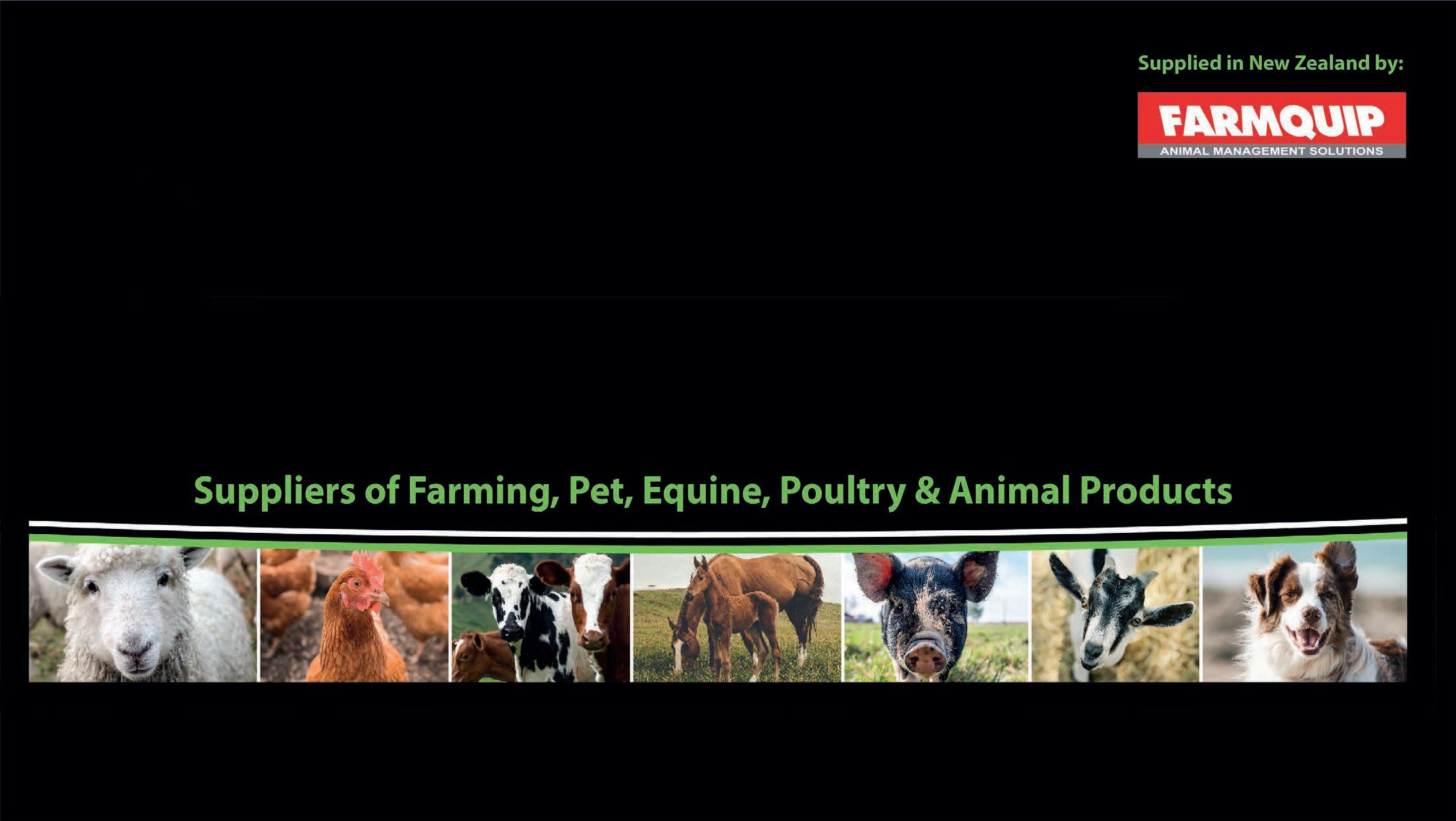

www. bainb ridge vet. co .nz Check o ut the f ull range a t Proudly distributed in New Zealand b y 2 New Zealand’s most trusted source of agricultural news and information Contents Advertise Get in touch WORK: New Alliance Group chair Mark Wynne says the season has ‘started on a much more positive note, but there is more work to do’. STORY P7 News . . . . . . . . . . . . . . . . 1-11 Opinion . . . . . . . . . . . 12-15 People . . . . . . . . . . . . . . . . 16 Technology . . . . . . . . . . . . 17 World . . . . . . . . . . . . . . . . . 18 Federated Farmers . 19-22 Real Estate . . . . . . . . 23-26 Marketplace . . . . . . . . . . . 27 Livestock . . . . . . . . . . 28-29 Markets . . . . . . . . . . . 30-35 Weather . . . . . . . . . . . . . . . 36
Govt calls it for dry top of the south
Neal Wallace & Annette Scott NEWS Weather
THE government has declared drought conditions at the top of the South Island a medium-scale adverse event.
The areas included are Marlborough, Tasman and Nelson and the declaration will provide support for farmers and growers, including measures involving tax liabilities.
Rural Communities Minister Mark Patterson said his decision follows a meeting this week of the district’s drought committee and an update from the Ministry for Primary Industries.
Federated Farmers Marlborough president Evan White said rainfall in the past nine months was the lowest in 94 years, soil moisture is in deficit, there is a shortage of stock water and farmers are selling young livestock.
“No two ways about it, it is serious and it should be called,” he said.
Doing so will provide tax concessions and additional funding for support groups such as the Rural Support Trust, which has already been given $20,000.
“The money for farmers to pay tax is not there.
“It has been used to buy in feed and for sending stock to grazing,” said White.
Late summer dry conditions are spreading from Otago to the lower North Island and Northland and Weather Watch chief forecaster Philip Duncan warns there is little likelihood of any reprieve as traditional El Niño patterns dominate for the next few weeks.
“High pressure systems will control the weather for the next week or two, meaning places that are dry will continue to get drier.”
Cold wet fronts are not advancing beyond Southland and Fiordland due to high pressure
systems dominating the eastern half of Australia and all of NZ as El Niño patterns are not expected to ease until late April or May.
“Until we get high-pressure zones breaking up in the Tasman, that’s when we will get proper rain.”
The dry is biting hard in South Canterbury, with stock water now running low and dairy farmers dropping to once-a-day milking.
“We are in a bad way, it’s been dry since before Christmas, stock water availability is now a problem and winter feed crops are struggling,” Federated Farmers provincial president Greg Anderson said.
With the Opuha Dam running dry and the rivers feeding Opuha low, shareholder farmers have been on irrigation restrictions, many since early February.
“There’s a lot of silage being fed out; the autumn feel is setting in. It’s going to be a long winter.
“Store stock has been okay, but
A lot more than April showers needed
 Neal Wallace NEWS Weather
Neal Wallace NEWS Weather
SOUTH Canterbury’s parched Hakataramea Valley needs more than one decent rain to turn conditions around.
Local farmer Hamish Bell said it will take several decent deluges for the area to recover, something he is hoping will happen over autumn.
After two exceptional summers, he hasn’t had decent rain since December and the lack of moisture has been accentuated by constant wind and, until recently, heat.
Even those farmers with irrigation are struggling to maintain growth.
Hamish and Charlotte, who farm 1000ha of rolling farmland, have been feeding supplements to their sheep for a month and
have destocked all their lambs.
On reflection, Hamish said he should have weaned his lambs earlier than mid-January.
He weaned and sold his calves
this week, a month earlier than usual, and these will be followed in the coming days with dry and cull cows.
“Every mouth we can get off the farm will help.”


it has slowed now as agents find moving stock has become more difficult.
“A good, slow, soaking rain is on order and while it won’t help grass growth it will certainly help winter feed crops.”
“Yes, it’s dry,” said North Canterbury Feds provincial president Karl Deans.
“In a normal year it wouldn’t be so much of an issue but with low returns and high interest rates putting more pressure on, it’s all compounded.”
A meeting called by the Hurunui adverse events committee last week confirmed the need for prudent farm management through autumn.
“This is not an abnormal summer but after two summers wetter than normal, this has come as a shock to some, particularly farmers new to the region.
“At this stage it’s not an unmanageable event, but if rain doesn’t eventuate mid to late autumn, then things will change,” Deans said.
North Otago Federated Farmers president Myfanwy Alexander said
irrigation schemes are struggling to keep pace with demand and drying from constant wind.
Hawke’s Bay is also drying out with February rainfall half the long-term average, but Federated Farmers president Jim Galloway described conditions as seasonal.
The money for farmers to pay tax is not there. It has been used to buy in feed and for sending stock to grazing.
Evan White Federated Farmers
The concerning factor is that farmers have more lambs on farm than usual for this time of the year, potentially compounding issues should the weather remain dry.
The federation’s Wairarapa president, David Hayes, said after several wet summers, the province is experiencing a more typical dry summer, although conditions have dried rapidly in southern and eastern parts of the province.



3 FARMERS WEEKLY – farmersweekly.co.nz – March 18, 2024 News 3
LEAN PICKINGS: Dry conditions are spreading through the South Island and lower North Island.
Photo: Dana Johnston
DRY AS CHIPS: Hakataramea Valley farmers Hamish and Charlotte Bell haven’t had decent rain since December.
Photo: Dana Johnston
In pursuit of one entity, one strategy
 Annette Scott PEOPLE Food and bre
Annette Scott PEOPLE Food and bre
PASSIONATE wool advocate Tom O’Sullivan has left his post with Campaign for Wool for a job he believes will offer greater opportunity to make a difference for the New Zealand strong wool sector.
O’Sullivan joined Campaign for Wool NZ (CFWNZ) in 2019.
A fourth-generation sheep and beef farmer, initially in Mid Canterbury then Hawke’s Bay, he was passionate about wool, despite having graduated with a commerce degree from Lincoln University and initially pursuing his career as the beef marketing manager for Anzco.
“Home on the farm, though, I was very quickly horrified of the lack of return for the effort, risk and money involved in running a big sheep and beef breeding property.
“I was frustrated where the strong wool sector was going and wanted to make a difference as a farmer for farmers.”
He says 2019 “was the first year we just broke even between the cost to shear and the price we sold for and ever since for five seasons it has cost to shear”.
“It got to me and at the end of the day it got me involved with CFWNZ.”
Fronting up every day with a truckload of passion for the industry, O’Sullivan very quickly became the face and voice for CFWNZ, giving strong wool a huge amount of visibility across the nation.
“I am comfortable I have played a significant role in the campaign’s progression from where we were when I joined to the point where in the past year I believe that wool has had a bigger profile in NZ than it has done for decades.”
He is still very eager to drive more much-needed change in the NZ wool industry.
“However, I feel I no longer have the ability to do so via the Campaign for Wool, so I am very excited about looking at new opportunities now.”
O’Sullivan officially finished
Continued from page 1
Mathieson, said 90% of its kiwifruit is due to cross the EU border after May 1, meaning most of this season’s EU-bound crop will benefit from the tariff being scrapped.
A September 1 start date, however, would have seen 80% already in the market, dramatically lowering the tariff savings available for this season’s crop.
“The early implementation of the agreement is really welcome news,” Mathieson said. It was similar for onions, with 50% of exports to the EU due to arrive after May 1, when the current tariff of 9.6% is now due to be scrapped.
Waiting till August would have come too late for this season’s
with CFWNZ on March 11, having fronted a key joint wool expo between the campaign and Wool Impact at the Upper Clutha A&P show at Wanaka.
“It was just such an amazing note to go out on, there are so many passionate people out there better understanding wool as a quality NZ product and really wanting to use wool in so many ways.”
It is frustration that has triggered O’Sullivan to move on.
“I have been involved and contributed to a number of wool working groups over the years. Not always have I agreed with the way these groups have been established or functioned.
“There’s been effort by industry but nothing to show for it, no strategy despite the formation of Wool Impact, the one single entity, significantly government funded, hand-picked and charged with driving the industry forward.
“Yes, I see the collaboration of CFWNZ and Wool Impact as being a good thing, but rationalisation of the industry needs to go much further.
“The one entity, one strategy is not happening.”
On the farm, “farmers are frustrated, wool is not doing its thing for them, they are voting how they are feeling, shedding sheep, more cattle. It’s very soon going to be too late; we need to drive forward with tangible change now.
“We need an equitable funding model to drive an overarching single entity. It can’t always be funds from growers.
“All making money in the industry need to contribute to the pot that drives the industry.
“This is my biggest frustration. We need a clear, single strategy that we are all clear on.
“At the moment there is a hell of a lot of hui, and not a lot of doey. There are still too many with the same fingers in the same pies.
“Calling out a couple, Wools NZ has retracted, they are more in a silo than ever they were – and WRONZ, where are they playing?”
Wool Research of NZ (WRONZ) is sitting on $30 million of farmer funds from the former Wool Board days.
crop to benefit, Onions NZ chief executive James Kuperus said.
“None of our onions would have arrived after August,” he said.
Kuperus estimated early implementation is worth $3m to the industry this year, rising to $6.5m in 2025.
“It is going to put us on a level playing field with some of our southern hemisphere competitors like South Africa and ahead of our main competitor Australia, who continue to pay the 9.6% tariff.”
However, not everyone is happy with the government’s approach.
The Dairy Companies Association of NZ (DCANZ), already grumpy about the small market access gains for its members from the deal, said the shortened select committee scrutiny of the legislation

At the moment there is a hell of a lot of hui, and not a lot of doey. There are still too many with the same fingers in the same pies.
“They say they are keeping it for a rainy day. Well, if this is not a rainy day now for the industry then when will it be?” O’Sullivan said.
He questioned the level of urgency.
“Sheep numbers are declining, wool breeds are in decline, questions need to be asked of those responsible. What’s happening?
“Wool Impact is a three-year tenure, it’s coming to an end, what happens at the end of the runaway, what happens in the next 10 years?”
Optimism is driving O’Sullivan’s move to the commercial sector.
skimmed over important details.
In particular it is concerned a new regime for policing the use of European cheese names like Feta and Parmesan unnecessarily replicates existing rules for trademarks and creates uncertainty for NZ producers.
DCANZ executive director Kimberly Crewther said select committee members appeared to overlook advice from officials that existing rules under the Fair Trading Act would be sufficient to police the new protections for EU names brought about by the trade deal and there had not been time to challenge them before the legislation came back to the House this week.
She said DCANZ will lobby for changes before the legislation is passed.
Next month he starts his new business development role driving the Floc brand for T&R interior systems.
Floc brings premier wool products from 100% NZ-grown and -manufactured strong wool to interior design, creating innovative use and value for NZ strong wools as acoustic panels.
“Bringing together all the goodness of NZ strong wool into world-leading, innovative and responsible acoustic tiles and launching it to the world is a whole new venture.
“But I feel sceptical to the point that I believe I can influence the industry’s return to resilience more through this exciting commercial opportunity.
“Wool on walls: the potential is huge both for commercial businesses and residential homes.
“My time with CFWNZ is not lost, but very frustrating to see where the industry has not got to.
“There is a good future for wool and I am very excited to get my teeth into this new venture with massive potential globally for NZ wool.”
CFWNZ chair Ryan Cosgrove acknowledged O’Sullivan’s time with the campaign.
“Tom has been an integral part of our organisation since 2019, having served as a dedicated trustee, chair, and most recently as general manager, where he has played a crucial role in actively promoting and advocating for NZ strong wool.
“We’re really sad to see Tom go as he’s been such an integral part of CFWNZ’s story so far.
“He has been enthusiastic and driven when it comes to putting wool front and centre of consumers’ minds, hugely passionate, and has always been keen to get out on farm and into our rural communities to yarn with farmers about their challenges.
“Tom was exceptionally important in getting wool into the mainstream media space as a passionate advocate and voice for wool – especially with his perspective as a grower.
“We are considering how we will fill his responsibilities, but certainly Tom leaves a large gap in the campaign,” Cosgrove said.

4 FARMERS WEEKLY – farmersweekly.co.nz – March 18, 2024 News 4
EARLY HARVEST: Fast-tracking the deal means many millions of dollars to kiwifruit and onion producers this season.
PASSIONATE: Frustrated as he leaves Campaign for Wool NZ, Tom O’Sullivan remains passionate about wool and is still very eager to drive more much-needed change in the NZ wool industry.
Tom O’Sullivan Campaign for Wool NZ
Fire sparks questions about DOC choices
 Annette Scott NEWS Conservation
Annette Scott NEWS Conservation
MANAGEMENT of Department of Conservation land has come into question following a vegetation fire in North Otago that threatened neighbouring farmland.
Federated Farmers North Otago dairy chair Otto Dogterom has a run-off block as part of his dairy farming operation for his young stock adjacent to the block of DOC reserve land that went up in flames over a weekend in early March.
The fire was one of several in the tinder-dry region over that period.
“This didn’t need to happen,” Dogterom said.
“For five years this land has not been grazed. I have been always saying it is a fire risk, it needs to be grazed and two years ago, I again offered to graze it for them [the DOC] but they said no, and they had their reasons.
“Now it’s come to this and put neighbouring farmland at risk at the same time.
“All I really can say to that is thank goodness there were no
persons harmed and thanks to the firefighters the fire was brought under control and contained before it spread too far.”
Dogterom said there was a “big nor’wester blowing” and it was his dairy farm run-off manager who spotted the fire in its early stages.
“Again I say thank goodness for that.”
But he wants DOC to work with the community.
“DOC hasn’t been communicating, it did not want to listen to local community knowledge. This could have been a very dangerous situation.
“Neighbours are vulnerable, our staff, our homes and our buildings nearby are at risk.
“It’s easy to make an anti-DOC case, but we still have to live with them. We just want them to work with communities.
“They say this is climate change; well it’s not climate change, it’s man-made change.
“Yes, they are trying to save a rare plant or something, they totally refused grazing, but if this had been grazed a few times it would not have come to this.”
Dogterom said a regional DOC manager had made contact since the fire.
“Hopefully this is the start of
some community communication.”
The fire in the Earthquakes area near Duntroon burned through about 30 hectares of conservation land.
The incident controller at the fire, Jason Sarich, said firefighters had worked very hard in challenging conditions to contain the fire amid overnight gale-force winds.
A further 30 firefighters and two helicopters that worked on the fire were joined by two crews of firefighters from DOC.
Fire and Emergency’s command unit from Timaru was also at the scene.
Most of this fire was in grass, and spread rapidly in the gale-force winds.
“The wind dropped around 7am [Monday morning] and crews were able to get on top of it pretty quickly,” Sarich said.
Once the fire was contained, DOC fire crews worked with helicopters to mop up hot spots and monitor the fireground for the next few days.
DOC coastal Otago operations manager Gabe Davies acknowledged the fire had been stressful for nearby landowners “and our thoughts are with them”.

He said Fire and Emergency New Zealand (FENZ) is leading an ongoing investigation into the fire, looking at the cause and origin.
The reserve is managed with the goal of maintaining and restoring the natural heritage values at the site. It is noteworthy for its limestone ecosystems, home to several threatened plant species including a nationally critical species of Lepidium or limestone cress and a nationally critical species of Gentianella, which is only known to be found at one other site. The site also has significant cultural and heritage values.
Davies said DOC recognises fire is a major threat to conservation
values given ecosystems that have taken decades to restore can be destroyed by a blaze in seconds.
He said the fire has started a broader conversation about how the reserve is managed.
“We want to work closely with local landowners and mana whenua to understand their views and how we can work together to manage the site.
“In general terms, the way we manage land varies from site to site and considers a range of factors, including the ecological, heritage and recreational values and potential fire risk.
“We always aim to be a responsible neighbour and to work constructively with adjacent landowners.”
Zanda McDonald 2024 crowns trans-Tasman pair
Crawshaw, 27, is an extension officer for Angus Australia based in New Zealand.
TWO exceptional young women have been crowned 2024 winners of the Zanda McDonald Award.
New Zealander Nancy Crawshaw and Australian Tessa Chartres have taken out the top honours with the award, which recognises and supports future leaders in the primary sector.
She uses knowledge of the beef supply chain to facilitate engaging field days, youth programmes and workshops for primary producers, which adds value to their businesses.
Chartres, 32, based in Deniliquin in New South Wales, is the general manager of business development at Murray Irrigation, where she

is responsible for the delivery of Commonwealth funded projects, water policy, ICT transformation and commercial business contracts.
The Zanda McDonald Award provides an opportunity to accelerate the careers of young people in ag through mentorship and education.
Finalists included Carla Muller, 31, agricultural economist and principal consultant for
Perrin Ag and former president of the NZ Institute of Primary Industry Management, based in Whakatane; and Tim Dangen, 31, beef farmer in Muriwai West Auckland, and 2022 recipient of the FMG Young Farmer of the Year Award.
Award chair Shane McManaway said the judges were impressed with both Crawshaw and Chartres’s achievements to date, and the remarkable contributions
they’re already making to agriculture.
“They both embrace the values that hold true to the award, and are extremely worthy recipients. Nancy is thoughtful and sincere, and has an indepth knowledge of the industry from pasture to production,” McManaway said.
The winners were announced at the annual Impact Summit in Queenstown.


The catchment groups have found almost a little bit of a church for those farmers that want to just keep moving faster, and be agile and fit for the future and what they see as a very changing dynamic landscape. “ Alison Dewes Farmer, Vet & Environmental Advocate Better farming for a better future LISTEN NOW Join Farmers Weekly managing editor Bryan Gibson for our weekly podcast covering the big issues in the food and fibre sector. It’s rich farming news for time-poor farmers. 5 FARMERS WEEKLY – farmersweekly.co.nz – March 18, 2024 News 5
THREAT: Federated Farmers North Otago dairy chair Otto Dogterom says a re at a DOC reserve in North Otago put neighbouring farmland at risk.
Staff reporter PEOPLE Awards

 Gerald Piddock MARKETS Dairy
Gerald Piddock MARKETS Dairy


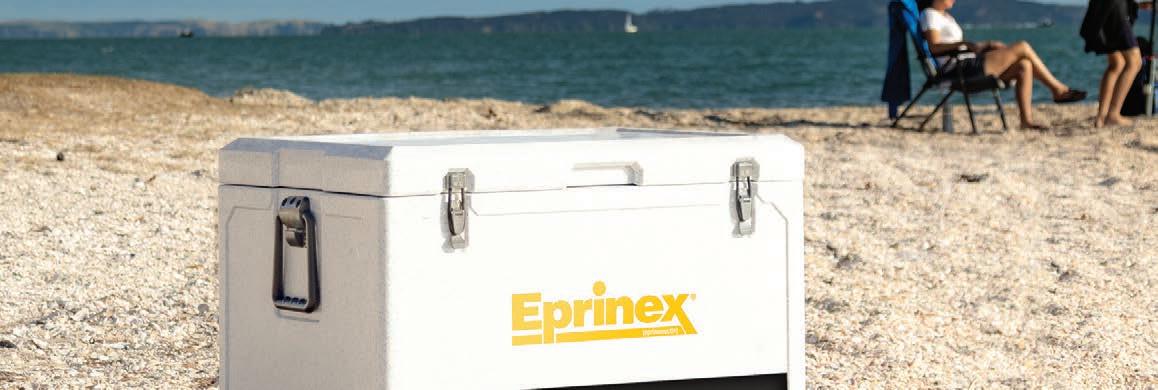








T11 at 7am and closed on Tuesday March 12 at 7pm.
It is not yet known how many farmers took up the offering.
Fonterra has also changed how the fixed milk price works. Fonterra milk supply director Lisa Payne said the aim is to improve the experience farmers have with it while maintaining or enhancing the benefits it delivers.
“We’re introducing greater flexibility around over-subscribed events, which occur when the requests submitted within an application period exceed the volume of milk we have announced as available for that event.
“For the coming season, we’ll have some flexibility to increase the monthly volume by up to 10% to better respond to farmer demand.”
The milk on offer will also be doubled, Payne said.
The maximum total volume Fonterra may make available for applications for the 2024/2025 season has increased from 75 million kg MS to 150m kg MS, or around 10% of the co-op’s total New Zealand milk collections.
“It’s also intended to help us further strengthen relationships with key customers who value price certainty for the products they buy from us, and the premiums we receive from these contracts in turn benefit all shareholders of the co-op.”
It also enables Fonterra to lock in longer term contracts and provide price risk management solutions to customers, Payne said.
“Products sold with price risk management solutions also attract higher margins. So overall there is a benefit to all shareholders because the premium from customers goes to the co-op’s bottom line.”
The fixed milk price is a financial tool farmers can use to gain greater income certainty.
It allows farmers to fix the price of up to 50% of their season’s milk supply with the price based on an independent market price – SGX-NZX Milk Futures Contract.
It is run once a month for 10 months of the year, and farmers can choose to participate when it suits them and their business.
The fixed milk price offering for the current season varied between $8.68 (March) and $7.55/kg milksolids (July).
Dairy farmers flocked to the first offer but shunned the most recent, when only 18 applications were made.
In March the full allocation of 15 million kg milksolids was taken up by 301 farmers.
In April the $7.74 net offer price attracted 41 applications and only 1.2 million kg were allocated.
In May and June the fixed milk price offer prices rebounded to $8.39 and around 200 farmers took up each offering, with allocations around 7.5 million kg in both months.
The 18 applicants in July took only 380,000kg, an average of about 21,000kg each.
Follow us




Purchase an EPRINEX ® 25 Litre Dairy Herd Pack from your veterinary clinic and receive this FREE* 68 L Dometic Cool-Ice Box *Promo 1st March - 30th April 2024. While stocks last. Scan the QR code to find out more about the benefits of choosing EPRINEX® for your dairy herd CHILL OUT... PROUDLY AVAILABLE FROM YOUR LOCAL PARTICIPATING VETERINARY CLINIC See product label for full claim details and directions for use. EPRINEX® is a registered trademark of Boehringer Ingelheim Vetmedica GmbH, used under license. ACVM Registration No. A007191. © Copyright 2024 Boehringer Ingelheim Animal Health New Zealand Limited. All rights reserved. NZ-BOV-0001-2024. futureproducers.co.nz Ensure young stock become future high producers through improved health, growth and energy at: 6 FARMERS WEEKLY – farmersweekly.co.nz – March 18, 2024 News 6 Fonterra tweaks fixed milk price system
HE first application period for Fonterra’s fixed milk price programme for the 2024-2025 season has ended with the cooperative offering $7.99/kg MS. The price in full is $8.09/kg MS, with service fee of 10 cents per kg MS.
The application window opened on March
OPT IN, OPT OUT: The xed milk price programme is run once a month for 10 months of the year, and farmers can choose to participate when it suits them.
Alliance welcomes new chair as Taggart retires
 Neal Wallace PEOPLE Production
Neal Wallace PEOPLE Production
ALLIANCE Group chair Murray Taggart has retired and been replaced by independent director Mark Wynne.
Taggart chaired the co-operative for 10 years and, as required under the constitution, this was his last term on the board.
He will officially step down in mid-April with Wynn’s appointment unanimously agreed to by the board.
“It’s been no secret that this was going to be my last term as Alliance chair,” Taggart said.
“The board has been working on a succession plan for a new chair and with new chief executive Willie Wiese in place, now is the appropriate time to pass the baton on.”
This means two of New Zealand’s largest meat companies will have new chairs this year, with Anna Nelson replacing Rob Hewett at the helm of Silver Fern Farms from May.
Taggart, a sheep, beef and arable farmer from Oxford in North Canterbury, has had two stints on the board. He was first elected as a supplier representative between 2002-07, re-elected in 2010 and appointed chair three years later.
Taggart is also chair of Taumata Plantations Ltd and a director of FMG Insurance.

WORK: New Alliance Group chair Mark Wynne says the new season has ‘started on a much more positive note, but there is more work to do’.
It’s been no secret that this was going to be my last term as Alliance chair.
Murray Taggart Former
At last year’s annual meeting, several shareholders raised concerns about the performance of the board and Taggart in particular
in light of the co-operative’s $98 million loss last year.
Taggart acknowledged last year’s difficulties, saying he had confidence in the co-operative’s resilience and ability to adapt.
“The past year has been tough for farmers and the co-operative on the back of significant weakening of prices in our global markets and high costs behind the farm gate.”
Wynne said the board remains committed to the co-operative’s long-term strategy “and in particular the changes made across the business in response to the tough trading environment”.
“These changes have highlighted significant opportunities for improvement.
“The global markets continue to be challenging,” he said. The new season has “started on a much more positive note, but there is more work to do”.
Wynne has extensive experience in agribusiness, including 20 years in the dairy industry and until last September was the chief executive of the Ballance Agri-Nutrients co-operative.
He was previously the president for South Asia for KimberlyClark, growing the United States multinational’s market share with brands like Kleenex and Huggies.
An experienced governor, he has served on various boards during his management career and in recent years as a director.
Searching for great balls of fire
Staff reporter NEWS Research
THE hunt is on for New Zealand’s next meteorite.
Fireballs Aotearoa is launching a nationwide search for meteorites. They could be sitting on a mantelpiece, used to hold a door open or manifest as an out-ofplace rock sitting in a paddock. Just nine meteorites have been confirmed in NZ.
In 2004, one came through the roof of a house in Ellerslie. It bounced off the couch, hit the ceiling and ended up on the carpet under the television. Because it
was daytime, no one had seen it enter the atmosphere, and it gave the house owners quite a start in the next room.
Apart from that, the Mokoia (Whanganui) meteorite that fell in 1908 is the only NZ meteorite to have been recovered soon after it fell.
The other seven confirmed NZ meteorites were mostly found by farmers over the past 165 years – they are: Wairarapa in 1863, Makarewa 1879, Morven 1925, View Hill 1953, Waingaromia 1970, Dunganville 1976 and Kimbolton 1976.
The Kimbolton meteorite got stuck in a set of harrows a couple


On-farm sales come to Taihape
 Suz Bremner MARKETS Livestock
Suz Bremner MARKETS Livestock
ON-FARM selling action made its way to Taihape on Tuesday, March 12, as Ohinewairua Station on Taihape Road held its inaugural sale. Facilitated by Carrfields NZ, the sale featured 310 R2 Turihaua Angus steers, 140 R2 Turihaua Angus heifers and just over 7600 Romney wether and ewe lambs, offered on the picturesque high country property that spans 7500 hectares, 5500ha of which is effective country.
Farm manager Mark Haynes said that given the amount of stock to sell, it was worth having a go at an on-farm sale.
of times, and the Waingaromia rock was pulled out of the ground by a boy as the sheep kept hitting their feet on it.
In an average year, about four meteorites land on NZ, and over long spans of time that adds up to quite a sprinkling across the land.
So, it is not surprising that every now and then one of these extraterrestrial visitors is found. Meteorites can tell us much about the formation of the solar system four and a half billion years ago.
The most instructive are fresh falls that haven’t been weathered on Earth, which is why Fireballs Aotearoa has recently set up a network of 110 cameras looking for the fireballs and meteors that get low enough to land a rock on the ground. This camera network is a collaboration between members of the public, schools, universities, observatories, and the Royal Astronomical Society of NZ.
If you believe you might have a meteorite, get in touch with Fireballs Aotearoa at meteorites@ rasnz.org.nz or through fireballs. nz, and scientists will sort through the submissions.
If the sample is a strong candidate for being a meteorite, scientists will start a process that may lead to it being identified as NZ’s 10th meteorite.
“South Island do it a lot and east coast do it a bit and there was no one doing it around this region, so we thought we would give it a go. It makes economic sense from a buyer’s perspective to come to one place and buy what they want.
“Stock are traditionally sold in the paddock at Ohinewairua, just in smaller lots, so we thought we would test the water with an on-farm sale.”
A big crowd made the trip for the sale and to enjoy the hospitality provided.
The Taihape Rugby Club catered morning tea as a fundraiser and Aitkins Ranch provided lunch. Many of the Carrfields NZ team were on
hand to help sort and sell the livestock.
All stock was presented well, and Haynes said the cattle were the highlight.
The top R2 Angus steers sold for $1460 and the remainder made $1260-$1330 with most staying local. Two lines of heifers made $1110-$1160. The lambs sold as expected, making current market values.
Stock are traditionally sold in the paddock at Ohinewairua, just in smaller lots, so we thought we would test the water with an on-farm sale.
Mark Haynes Ohinewairua Station
Around 7000 Romney wether lambs reached a top of $109 and the balance sold for $75-$99, while the top ewe lambs made $103 and $76 for the remainder. Lambs sold to Hawke’s Bay, Manawatū, South Island and locally. Following a very successful day, Haynes said that the on-farm sale will become a regular feature on the station’s calendar.
MORE:
For more market insights, browse the range of AgriHQ’s livestock reports. Tailor a subscription to suit your needs at www.agrihq.co.nz/livestock-reports
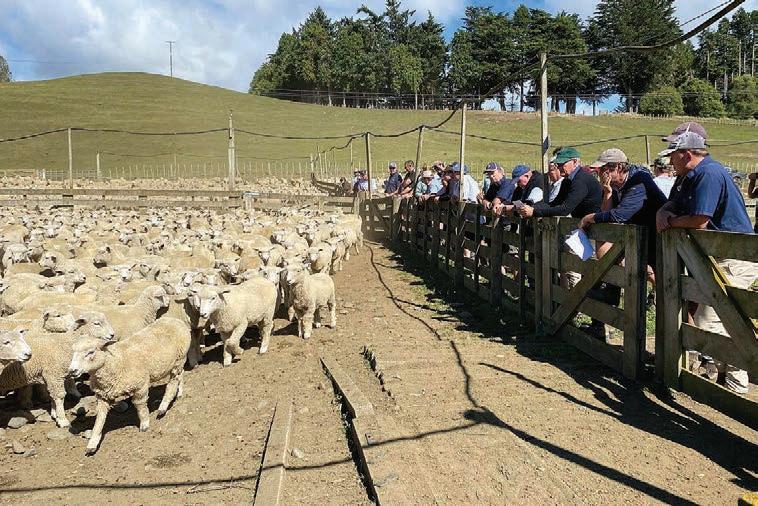
7 FARMERS WEEKLY – farmersweekly.co.nz – March 18, 2024 News 7
BEAUTIES: Carr elds NZ sell a line of Angus cattle at the inaugural Ohinewairua Station on-farm sale on Taihape Road.
LAMBS ANYONE? A big crowd gathered at the lamb pens for the Ohinewairua Station sale.
BRIGHT: A green meteor captured from Richmond looking south towards Canterbury.
Photo: Greg Price
Alliance chair
Data can help deal with drench crisis
 Neal Wallace TECHNOLOGY Animal welfare
Neal Wallace TECHNOLOGY Animal welfare
DATA, not a calendar, will determine future parasite management given the depleted arsenal of animal health tools available to farmers.
That’s the view of Greg Mirams, the managing director of parasite management company Techion, who has devoted 30 years to studying the issue.
He said the discovery of parasites resistant to chemical drenches is not a terminal situation for farmers but can be resolved by a reset in their approach.
“With the right information and the right support you can adjust your business and move on,” he said.
For 30 years Mirams has been advocating greater care and monitoring of the effectiveness of chemical parasite treatment in livestock, including a shift to targeted application and away from an eye assessment of animals or a calendar.
“We’ve had this ‘I’ve got a problem, I’ll shoot that problem with a drug,’ approach. Now we need to think a bit more broadly about that.”
He conducted a study that found 27% of farms have stock that are resistant to the triple combination drenches.
The implications are far reaching.
“If you buy ewe lambs and give them a quarantine drench with a triple combination drench, there is a one-third chance it will not work,” said Mirams.
By the time stock performance starts to noticeably decline, Mirams said, those animals have been compromised for up to three weeks.
“By the time you go out and see lambs are not doing well, they have been parasitised for weeks.”
The initial response is to establish the reasons for that nonperformance by sampling faeces for levels of parasite eggs 10 days after drenching.
That test will determine if it is due to drug failure, incorrect dosage rates or a faulty application gun.
If it is due to parasite resistance, solutions include using rams bred with higher parasite tolerance, using novel forages that help maintain a clean environment, altering the cattle to sheep ratio, and stock rotations.
“That has to be underpinned

DECADES:
by regular egg count data to prove that what you are doing is working.”
With 95% of parasites living on pasture, Mirams said the focus needs to be forage management that reduces larvae and lessens the reliance on drench.
Mirams saw 20 years ago that drench resistance in cattle was a
looming problem given the shift to intensive calf and young stock rearing and specialist bull beef operations.
He said responses are limited because the delivery of parasite control in cattle is by pour-on or injection.
Mirams said pour-on application is linked to inaccurate and variable
or sub-clinical dosages in cattle due to chemical dripping off or being licked off which can lead to developing resistance. Solutions come back to managing larvae on the pasture.
We’ve had this ‘I’ve got a problem, I’ll shoot that problem with a drug,’ approach. Now we need to think a bit more broadly about that.
Greg Mirams Techion
Mirams reiterated comments from other experts that there are no new products or compounds to address the drench resistance issue due to the development and regulatory costs.
There could be some pharmacological changes to existing chemicals and possibly some “fringe developments” but Mirams said there is no certainty.
He said his message to farmers has not changed.
“It has been the same consistent message for the last 30 years but the opportunity is there. It is a management issue which requires information and support.”
The stigma that follows drench resistance
 Neal Wallace NEWS Animal welfare
Neal Wallace NEWS Animal welfare
IT REMAINS a mystery how drench resistant internal parasites infected a South Island sheep farmer’s flock.
The farmer runs a breeding and finishing unit, does not buy in stock or use long-acting animal health products – the normal sources of resistance – but about four years ago he noticed a decline in lamb performance.
Tests conducted by diagnostics company Techion identified some drenches were still working but a repeat of that test last summer revealed a marked decline in
their efficacy, especially to trichostrongylus or trich worms.
The farmer, who Farmers Weekly agreed not to name, said the discovery brought with it fears about the impact on his business but also the social stigma leading to a possible impact on his land values.
Many of those fears have proven unfounded as he has been able to largely manage the problem with help from Techion.
But it has required major management changes including regular parasite monitoring.
At the peak of the season he can send several faecal samples a week to the Techion lab for analysis. These are sent in electronic
form, which means results can be returned quickly, usually while stock are still in the yards.
Trich worms are an issue from mid-January so traditional drenches can be used up to then, before he moves to Startect and Zolvix, which are expensive and were difficult to source this season.
Because of the resulting targeted drenching regime he has followed, there are more mobs of stock to manage.
Older sheep are also monitored for worm burden with drenching targeted based on need.
The farmer is making more strategic use of cattle to chew down and open up pasture to allow
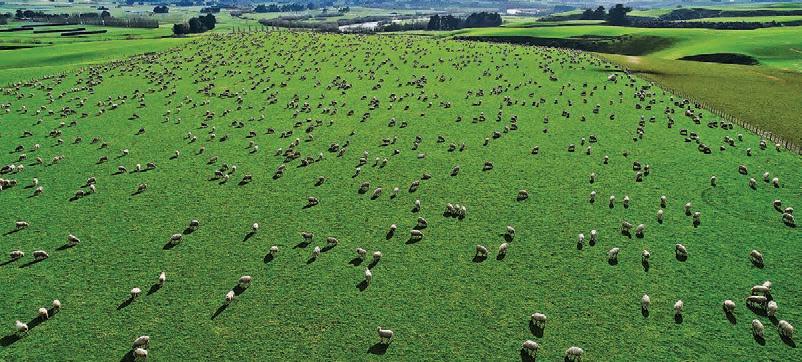
VALUES: The farmer says the discovery of drench resistance brought with it fears about the impact on his business – and about the social stigma leading to a possible impact on his land values.
ultra-violet rays to kill the larvae.
Looking ahead, he intends to investigate the sowing of specialist lamb-finishing feed such as leafy
turnip and kale, which tend not to harbour parasite larvae to the same degree as established pasture.











8 FARMERS WEEKLY – farmersweekly.co.nz – March 18, 2024 News 8
For 30 years Greg Mirams has been advocating greater care and monitoring of the effectiveness of chemical parasite treatment in livestock.
Australian fert company hits NZ shores
 Richard Rennie in Melbourne NEWS
Richard Rennie in Melbourne NEWS
Fertiliser
THE New Zealand farm fertiliser market is heading for a shakeup with the arrival of Australia-based Marnco this autumn.
Marnco has established a solid base in Australia since its entry in 2018, claiming 20-25% of the Victorian and South Australian farm fertiliser market. Its primary supply source is through United States-based fertiliser distributor Nitron.
Managing director Mark
Been said the NZ market is a natural progression from the eastern states of Australia, with the company able to negotiate reasonable shipping and transactional economies by working across the Tasman. He appreciates that stepping into a mature market in NZ with two heavily entrenched farmer cooperatives is a bold move, but
said that the timing is right.
“We feel we can deliver a lowcost, low-overhead model.
“We will not be everything to everyone, and our focus will be on bulk N, P and K, and doing it competitively.”
The NZ fertiliser market was about 1.6 million tonnes last year, a particularly low year after seasonal conditions and shipping issues impacted the industry in terms of both supply and demand.
Typically, the market runs at a longer-term average of about 2.1 million tonnes a year, comprising a third of nitrogen products, 40% phosphate and the remainder a combination of potash and combined fertiliser types.
Been has observed that the NZ market is heavily serviced with relatively dense depot locations in districts.
“But this also brings larger overheads, which can only be recouped through higher prices.”
The NZ fertiliser market shares some similarities to the likes of the telco and supermarket sectors, dominated by two large players


If this was the supermarket sector and Ravensdown and Ballance are Foodstuffs and Woolworths, then we are the Aldi.
Mark Been Marnco Fertilisers
with smaller operators on the edges.
“If this was the supermarket sector and Ravensdown and Ballance are Foodstuffs and Woolworths, then we are the Aldi.”
SOMETIMES IT’S HARD TO BE HUMBLE.

PROGRESS:
Marnco managing director Mark Been has 30,000t of super on the water heading to the NZ market this autumn.
Been questioned whether farmer shareholders in the two incumbent operators are seeing the full value of participation in the co-ops and whether more value could be delivered directly through a company like Marnco.
He estimated fertiliser costs in NZ are 5-10% higher than in Australia, depending upon the product type.
The company has been working for the past eight months to set up in NZ, establishing bulk supply depots on the Genesis Energy coalhandling site at Mount Maunganui and another site in Timaru.
Access to port facilities is a vital component for a bulk

PROUD TO BE GENERAL INSURANCE COMPANY OF THE YEAR. AND A FEW OTHER THINGS.

fertiliser operator, and something the company has found easier to acquire in NZ compared to Australia, where port land is at a premium.
A ship is already on the water destined for NZ with 30,000t of phosphate, scheduled for arrival in March/April.
“At this stage we are looking at all our options when it comes to distribution, on both a B2B basis and a B2 farmer basis.
“We are confident there will be plenty of interest in what we are offering, which is a high quality, bulk product delivered efficiently and cost effectively for NZ farmers.”


Not wanting to crow about it, but we’re pretty stoked to be named General Insurance Company of the Year by ANZIIF. Mostly because the award recognises how well we look after our clients. And at the end of the day, that’s what we’re here for. When you add to that the customer satisfaction awards we’ve also been given from Canstar and Consumer, we’d have to humbly admit that we must be doing something right.
We’re here for the good of the country.





9 FARMERS WEEKLY – farmersweekly.co.nz – March 18, 2024 News 9
NZ lawyering up over latest Canadian move


NEW ZEALAND looks set to call in the lawyers once again, just six months after winning a groundbreaking case against Canada for failing to uphold its obligation under the Comprehensive and Progressive TransPacific Partnership to open up its dairy markets.
A panel of three international judges in September ruled in NZ’s favour when it said Canada had not complied with the 12-country trade agreement when it allocated the bulk of the import quota created for NZ exporters to its own local processors. The case was the first taken by one CPTPP member against another.
Exporters estimate their failure to get their hands on low-tariff quotas for 16 dairy import categories cost them $120 million in lost earnings in the agreement’s first three years.
Last month Canada called for
submissions on its proposal for a new allocation method due to start on May 1.
Trade Minister Todd McClay cornered his Canadian counterpart Mary Ng at a meeting of global trade ministers in Abu Dhabi recently.
“We have said we will be submitting in the process and I made it very clear to her that if they do not make the changes to meet those obligations, we will take further legal action.”
I made it very clear to her that if they do not make the changes to meet those obligations, we will take further legal action.
Todd McClay Trade Minister
McClay said he agreed with the NZ dairy industry that Canada’s latest proposal still does not follow the CPTPP’s rules.
“If there is a disagreement then
NZ back in Gulf talks about talks


LEAD negotiators for New Zealand and the Gulf Cooperation Council are to meet for the first time in nearly a year in an attempt to revive stalled trade talks. Negotiations had been substantially completed with the club of six oil-rich Middle Eastern states in 2009 to scrap tariffs costing NZ agricultural exporters $60 million a year.
However, the deal was never completed after Gulf Cooperation Council (GCC) kingpin Saudi Arabia refused to back it.
Initially NZ’s refusal to resume live sheep exports to the region was to blame, but in more recent times a rift between Qatar and the rest of the GCC has held up negotiations.
That impediment appeared to fall away two years ago after diplomatic tensions subsided and the GCC resumed trade negotiations with a number of countries and concluded deals with several more.
Former trade minister Damien O’Connor quickly followed up with a trip to the region in March 2022 to restart talks, but progress towards an agreement faltered soon afterwards.
The GCC withdrew its earlier offer to scrap agricultural tariffs after O’Connor sought to “update” the deal to include workers’ rights and environmental concessions under the auspices of the Labour
the mechanism is there in CPTPP, and if we win again, which I expect we would, they would be forced to make another change,” McClay said.
Asked whether Canada’s latest proposal could be a tactic to draw the NZ government into a neverending cycle of legal cases without ever intending to comply with the CPTPP and open up its dairy markets, McClay said that was possible.
“They could keep on doing that and there are many other options before we get to that point, but at the moment what I am asking officials to consider is does it meet their obligations under CPTPP?
“I believe it doesn’t and so we will take the next step which is going back to challenge that.”
Asked whether he would consider raising tariffs on Canadian exports to NZ should the Canadian government continue to fail to uphold its obligations, McClay said he would “reserve the rights to take any action we think is appropriate under CPTPP”.
Meanwhile McClay said he

had also spoken to Ng about growing concerns among NZ dairy exporters that they risk being undercut in the United States market by subsidised Canadian rivals.
Fonterra chief executive Miles Hurrell singled out Canada’s Milk Class 4(a) system of dairy subsidies late last year as the largest threat to the co-operative’s business in the US.
As well as expressing the NZ government’s concerns in person,
McClay said he will follow that up with a formal letter.
McClay said he also raised the matter with US Trade Representative Katherine Tai at the World Trade Organisation ministerial meeting in Abu Dhabi.
“I indicated that I would like to talk to the US more about this in the coming months when I have a chance to get up there.
“But the first thing to do is to raise it with the Canadians, which I did.”
Government’s Trade for All agenda.
Soon after last year’s election, new Trade Minister Todd McClay said he would review that policy.
Now it has been agreed that the lead negotiators for the GCC and NZ will meet in the next month to try to get the talks back on track. Negotiators last met in Riyadh from May 30 to June 1 last year.
The breakthrough came after McClay met his Saudi Arabian counterpart for an hour at the recent World Trade Organisation ministerial meeting in Abu Dhabi.
“There was an acceptance on both sides between the Saudi minister and I that the negotiations had probably got to a place that neither side had intended it to,” McClay said.
“The last government did all sorts of things they thought were helpful. It appears they weren’t as helpful as they hoped they would be.
“That is why we have asked the two negotiators to get together and see what blockages are there and look at what the solutions could be rather than just rehashing old arguments.”
McClay said he hopes to return to the region for high-level talks once negotiators have had a chance to meet.
“I view that as extremely positive but there is still a long way to go.”
Meanwhile, a former Indian trade official has used a cricketing analogy to downplay New Zealand’s chances of achieving dairy market access gains from

There was an acceptance on both sides between the Saudi minister and I that the negotiations had probably got to a place that neither side had intended it to.
Todd McClay Trade Minister
free trade talks with his country.
“A good exchange would be if India opens dairy but Kane Williamson starts playing cricket for India,” said Abhijit Das, a former trade negotiator and head of the Centre for World Trade
Organisation Studies at the Indian Institute of Foreign Trade in New Delhi.
“India would find it very, very difficult to give market access in dairy,” Das said from the sidelines of the recent meeting of WTO ministers in Abu Dhabi.
The new government has given top priority to getting negotiations stalled under its Labour predecessor back on track but has been coy on whether it is prepared to do a deal without market access improvements for dairy exporters.
NZ is not the only major dairy producer currently in talks with India for a free trade deal. The United Kingdom, the European Union and Canada are all at various stages of negotiations.
Das said he did not have inside knowledge of any of those negotiations but the general attitude of the Indian government towards protecting its dairy farmers means the chances of any of those countries prising open the dairy market is low in the short term at least.
“It would be safe to presume that the Indian government would have been cautious before offering any concessions in the dairy sector,” Das said.
A lot of effort had gone into boosting dairy production in recent years and the Indian government would be reluctant to put those gains at risk by exposing its farmers to imported competition, Das said.
10 FARMERS WEEKLY – farmersweekly.co.nz – March 18, 2024 News 10
PROPOSAL: Trade Minister Todd McClay says he agrees with the NZ dairy industry that Canada’s latest proposal still does not follow the CPTPP’s rules.
Nigel Stirling MARKETS Trade
Nigel Stirling MARKETS Trade
POSITIVE: Trade Minister Todd McClay met his Saudi Arabian counterpart for an hour at the recent World Trade Organisation ministerial meeting in Abu Dhabi.
Farm profits set to tumble, says BLNZ
Finances
FARM profits could plummet 54% or $62,600 on average this financial year on the back of widespread cash losses in the sheep and beef sector, according to Beef + Lamb New Zealand’s midseason update.
The report says the outlook for the 2023-24 financial year, which ends on September 30, has worsened significantly since BLNZ’s October forecasts, because there has been no recovery in China, and Australian exports of red meat have been bigger than originally forecast.
An excellent lamb crop last spring has meant there are more lambs to sell, but it cannot compensate for lower per head prices and unavoidably high costs.
The report warns that farm profits could be down 54% to an average of $62,600 per farm.
This is a 67% fall in farm profit from the 2021-22 year to profit levels not seen since the 1980s, except for during the Global Financial Crisis.
China’s economic recovery





remains slow, resulting in decreased demand and lower farmgate prices, especially for lamb and mutton. The increased supply from Australia into international meat markets is also contributing to a global reduction in prices. Neither is expected to change much before the end of the season.
As a result, the forecast for lamb

and mutton prices for the season has been revised downwards. The annual weighted average all classes lamb price for 2023-24 is estimated at 651 c/kgCW1, down 12% on 2022-23 and 13% lower than the five-year average.
The annual weighted average all classes mutton price for 2023-24 is estimated at 241 c/kgCW, down 34% on 2022-23 and 49% lower than the five-year average.
New Zealand’s export receipts for lamb and mutton are forecast to be down 4.8% and nearly 20%, respectively, on last year.
On a positive note, beef has held up much better, driven by demand out of the United States as it rebuilds its herd post-drought. All beef is forecast to average $5.15 per kgCW for the season, which is 2.9% down on last year, but 2% higher than the five-year average.
Demand for lamb in Europe and the US has also been strong and this is expected to continue for the rest of the season.
Certain farm classes, such as high country, hard hill country, and South Island hill country, are hardest hit due to their heavier reliance on sheep revenue. The east coast region, still recovering from Cyclone Gabrielle and

UP BUT DOWN: An excellent lamb crop last spring has meant there are more lambs to sell, but that cannot compensate for lower per head prices and unavoidably high costs.
Many have already worked hard on cutting costs and my conversations indicate they’re leaving no stone unturned to find additional savings.
Sam McIvor BLNZ chief executive
ongoing wet weather setbacks in 2023, is projected to have the lowest regional profitability.
BLNZ chief executive Sam McIvor said input costs remain high and farmers are feeling it.
“Many have already worked hard on cutting costs and my conversations indicate they’re leaving no stone unturned to find additional savings. This is especially true for farmers with relatively high debt levels.
“They’re also looking to maximise income and taking stock to heavier weights, and where feed allows this is commonplace.”
Interest rates are a significant issue and relief from a fall in interest rates this season is uncertain, so the sector will need to draw on its traditional ability to weather cyclical tough times and on its tenacity, he said.



























































































RELIABILITY IS THE BACKBONE OF A WORTHY POUR ON. Every New Zealand farm is different, that’s why we’re constantly innovating to provide options for effective combination pour-ons that are outperforming in efficacy, safety and reliability. With DMI-Sorb™ technology, both BOSS® and world-first formula TURBO® Pour-on are rain-resistant combinations to tackle New Zealands unruly weather conditions. Talk to your vet about which product is best suited for your operation. ALLEVA.CO.NZ | PROUDLY NZ OWNED TURBO, BOSS and DMI-Sorb are registered trademarks of Alleva Animal Health Ltd. TURBO pour-on (A011722) and BOSS pour-on (A010817) are registered pursuant to the ACVM Act 1997. See www.foodsafety.govt.nz for registration conditions. *Available while stocks last. MASTERCARD GIFT CARD is not redeemable for cash. Offer applies to BOSS and TURBO Pour-on only. PROUDLY NZ OWNED PURCHASE A 5L OF BOSS® OR TURBO® POUR ON AND RECEIVE A $50 MASTERCARD GIFT CARD. PURCHASE A 2.5L AND RECEIVE A $40 MASTERCARD GIFT CARD*. SEE YOUR LOCAL VETERINARY PRACTICE FOR DETAILS. 11 FARMERS WEEKLY – farmersweekly.co.nz – March 18, 2024 News 11
Staff reporter NEWS
TOUGH: Beef + Lamb NZ chief executive Sam McIvor says costs are a big worry for farmers.

From the Editor
Adding fuel to the fire
 Craig Page Deputy editor
Craig Page Deputy editor
AS MUCH of the country continues to dry out, the threat of wildfire sits at the forefront of many farmers’ minds as they look to keep their properties and businesses safe.
But last week it was land owned and managed by the Department of Conservation in the North Otago area of Duntroon that raised some serious questions after fire burned through 30 hectares.
The fire threatened to spread to neighbouring properties, including a dairy runoff block belonging to Federated Farmers North Otago dairy chair Otto Dogterom.
Dogterom vented his frustration about the fire after having repeatedly aired concerns about the state of the DOC reserve.
He believes the land, which has not been grazed for five years, is overgrown and a fire risk. He has offered to help keep the
vegetation in check by grazing it, but DOC declined the offers.
DOC has good reason to protect some areas from grazing.
There are often threatened plant, animal or insect species to protect in parcels of land. In the case of the Duntroon site it is home to a limestone ecosystem and nationally critical species, one of which is only found at one other site in the country.
Any such ecosystem could be quickly damaged by stock.
However, given the tinder-dry conditions and growing fire threat, a major blaze in the area would destroy an ecosystem within minutes.
It is not the first time issues have been raised about the potential fire risk of DOC reserves.
The most notable was after the 2020 Lake Ōhau fire, which destroyed about 20 homes and forced dozens of evacuations.
At the time, Federated Farmers High Country Committee chair Rob Stokes said he had been warning the government about this danger for 12 years.
He said the DOC closing up land for national parks meant that the ground was not grazed by sheep and cattle and therefore tussocks and grass were left to grow wild.
Just weeks ago in this newspaper, Dr Derrick Moot, a professor of Plant Science at Lincoln University and leader of its Dryland Pastures Research team, spoke of the need to graze excess vegetation to help prevent wild fires.
Moot was involved in investigating the biological causes of the 2017 Port Hills fire and at the time said it would happen again unless our approach changed.
In December last year he predicted 2024 would be a burn year. A wet spring had seen the grass grow tall and flower and, without suitable grazing, it had become tinder dry and a perfect fuel for wildfires.
Given the tinder-dry conditions and growing fire threat, a major blaze would destroy an ecosystem within minutes.
Moot discussed the need to graze cattle higher on hill country, using virtual fencing, to eat away at the rough, flammable overgrown pasture that sheep ignore.
“Cows are the lawnmowers on commercial hill country farms. They clean up the excess vegetation in spring and summer and reduce the risk of a burn,” Moot said.
The DOC has indicated it is keen to have a “broader conversation” about how the reserve is managed and how it can work with landowners and mana whenua to manage such sites.
It is certainly a conversation worth having. Some middle ground needs to be reached before another fire on DOC land causes even more damage.
Letters of the week A better way to fight fire
N Wagener Houhora
IT WAS refreshing to read the article by Dr Derrick Moot relating to fire control, “For better fire control, send in the cows” (February 26).
At last a balanced view about fire control, which is absent in the main media, where it is mostly about temperature and the looming effects of climate change.
In the fire world there is what is known as the “fire triangle”, with each side representing a condition necessary for fire – heat, oxygen and fuel – supplemented by local topography (fires burn quicker and better burning uphill, for example) and wind speed and direction once the fire is underway, and also the time of day.
Dr Moot’s analysis of the fuel situation in the recent Port Hills fire is spot-on and realistically it is a recurring factor with fires, or wildfires as they have become in modern parlance, worldwide.
Also realistically, it is in the control of the fuel that mankind can have the greatest influence on the control of fires – perhaps starting from the base that fires in deserts are rare, even though there are extreme temperatures and lots of oxygen.
It is definitely a classic case of a stitch in time saves nine and it was a great pity that Dr Moot’s warnings about the inevitable return of fires were ignored seven years ago.
As a beef farmer I totally agree with his solution of using cows to control the fuel species. Especially dry cows, which can be pushed quite hard to no ill effect.
As a rural fireman of over 50 years in the Far North, and still involved, I have spent many hours firefighting at Kaimaumau.
Last year, after a break of about 15 years, there was another fire, which lasted a long time and chewed through $7 million before it was brought under control.
Unfortunately – and as always – as the last fire crews pulled out, the area quietly and quickly began the process of reverting to its former wilderness.
In spite of all the wailing from the various conservation groups about the loss of endangered species from an important wetland etcetera, there is no will to protect the area from fires. Fire breaks are anathema to the Department of Conservation and so it goes on.
The pity is that for a fraction of the cost of creating the network of firebreaks and
Continued next page

12 Editorial
FARMERS WEEKLY – farmersweekly.co.nz – March 18, 2024 Opinion 12
farmersweekly.co.nz Follow us Be a part of NZ’s biggest agricultural community and help create a better future
In my view ...
Easy to muster enthusiasm for Shepherdess weekend
Sara Hilhorst
Hilhorst is an AgriHQ analyst. She attended the event as a guest of Shepherdess Muster.
AS WE landed back at Palmerston North Airport on a Sunday afternoon, one word jumped to mind to describe my experience of the Shepherdess Muster – “Wow.”
Having processed my experience more, I came to the realisation that the wahine of New Zealand are simply a force to be reckoned with.
The weekend offered insight into the lives and journeys of influential women from many different cultures and backgrounds who navigated their way to success.
Typical of the New Zealand transport system, the journey had started with a cancelled flight to Auckland. This meant no flight to Gisborne, which left no alternative but to drive. As someone who suffers from travel sickness, my anxiety levels were increasing. To make matters worse, I still hadn’t yet met the women I would be traveling to Mōtū with. Well, a seven-hour car trip means you get to know strangers pretty quickly and while this wasn’t exactly part of the plan, it was certainly a case of some things are just meant to be.
Letters of the week
Continued from previous page access ways on the higher ground (it is not all wetland by any means) at the time of the firefighting, a local farmer could be employed with a tractor and rotary slasher a couple of times a year to keep these strategic paths open. But this does not happen.
In general the Far North has a high fire fuel loading and much of the suppression strategy is reliant on helicopters with monsoon buckets.
At a fire near Cape Reinga last year the officer in charge sized up the scene and said he needed 10 helicopters, which from all accounts is what he got – all paid by FENZ.
There is a need to break the cycle that has been in place for too long and look to policies which make genuine progress in fire protection.
A good start is to take heed and act upon the advice and analysis of people such as Dr Moot.
On arrival, a couple of hours late, it was straight into our “OpShop Frock” attire and to dinner – after having an Instagram pic under the Shepherdess Muster arch, which was dressed in a large array of flowers.
Looking around over drinks and canapés in the sunshine, it was clear to see that everyone was embracing the dress-up theme. Before any formalities, one trend that was already beginning to shine through was that everybody could be completely themselves with no judgment, which allowed people to quickly settle into the relaxed culture of the weekend.
A roundup of the troops for dinner and a comedy session were next on the agenda and guests were treated to the delightful Michèle A’Court, who had everyone in hysterics at her female-orientated jokes.
With everyone staying on site there was no limit to alcohol and good times, particularly when the band was introduced, and many danced their way into the next morning.
Saturday morning, it was off to one of the fitness options to make the most of the jam-packed weekend. I was quietly trying to head my way to yoga but unintentionally made eye-contact with the dance instructor. It took a little bit of warming in at 6.30am
Fair say for beekeepers
Colin McLean
Auckland
THE past can explain the present. By that I mean the perception that many commercial beekeepers have of what’s happening in the industry.
There are many parallels between beekeeping and the wider rural community, but what is lacking is a unified industry body that represents commercial beekeepers’ interests.
The government repealed the Apiaries Act a few decades ago, so funding and membership of the National Beekeepers Association (NBA) became voluntary. Do people pay if they don’t need to? Not many.
Opposition to the NBA eventually led to a “takeover” by vested interests and a restructure (or several) to form Apiculture New Zealand.
The process as observed by many older beekeepers has led to a lack of trust and a perception that many

I was quietly trying to head my way to yoga but unintentionally made eye-contact with the dance instructor.
but it did break the ice with a group of people in the same boat.
The weekend progressed with several workshops and key speakers, all of whom had their own quite different but equally empowering stories of their journeys through life and business.
The workshop options catered to a variety of needs, depending on what you wanted to get out of the weekend. Many were female and business focused but there were craft, dance, and comedy options available for those who wanted an experience that didn’t work the brain as much.
If your focus was to rest and relax, beauty and massage appointments were on offer also,
players, including exporters, some industry groups and the Ministry for Primary Industries, are all trying to influence things behind closed doors.
The governance process is from the top down. It’s run like a corporation, complete with road shows, “Have your say” and the usual stuff. The architects of change in the industry do not know and are probably not that interested in what’s happening at the coalface: the beekeeper who gets up every morning and pushes himself out the door to look after the bees.
An example of this is varroa. The colony losses that have occurred overseas (and continue to occur) are now happening here. Perhaps as New Zealanders we thought it wouldn’t happen to us or maybe it caught up with us sooner than we expected, but how many people apart from the beekeeper trying to save his bees really know what’s going on?
The idea of a pest management strategy for varroa is stupid. It would be like having a national strategy for the control of intestinal parasites in livestock – it just wouldn’t work and shows that
as well as wellness caravans and melanoma spot checks. The Shepherdess team nailed the choices and there was something for everyone at every stage of the weekend.
The weekend was fully catered and when it came to the food there couldn’t possibly be any complaints, with options often described as a “wedding menu”.
With no cell phone reception, networking, and socialising were forced upon everyone, particularly at seated meals. This allowed mixing and mingling with people from a range of areas. With fewer than 350 guests in attendance, you bumped into one another multiple times over the weekend, which gave you a real sense of belonging.
All in all, this weekend was beyond my expectations. I came away with a new sense of belonging, gratitude, and pride in our rural women and communities. I made a trio of great new friends on my road trip and spoke with people from many
some people are out of touch with reality.
Until commercial beekeepers get a fair say in running their industry, it will continue to be fragmented and divided.
And without commercial beekeepers you don’t have an industry.
Rainy day has arrived
Ralph Mason Marlborough
IN MY 50 years of farming I have never seen the meat price for lamb and ewes drop so much and the cost of inputs rise so much.
As far as I am concerned the sheep industry is in crisis and very little is being done about it beyond “farmers are having a tough season”.
The New Zealand Meat Board gets quotas for sheepmeat and also is supposed to help achieve optimal returns on exports.
Beef + Lamb NZ, with its Farming for Profit and do-good field days, is also supposed to help
different walks of life, who I would never have crossed paths with in normal daily life.
I can fully recommend this opportunity to anyone who needs a weekend away to refresh and refocus, as well as gaining invaluable business and life education. Congratulations to everybody who had input to the weekend – you nailed it, and I know many who attended, including myself, will be back.
farmers.weekly@agrihq.co.nz
Phone 06 323 1519
achieve better returns for farmers.
They have both failed farmers and have the cheek to ask for a rise in directors’ fees in a year like this.
They should be taking a cut in fees and the sheepmeat levies should be taken off until the price returns.
Why is there not a minimum price locked in when quotas are set?
How is it that Australia can undercut and take our markets?
The Meat Board failed again.
The sheep industry needs help in the way of cold hard cash payments, not money for consultants.
How many people are employed in farming support industries? We used to have two incomes – meat and wool; now it’s just meat. If the low prices continue into next season we are going to see support industries like aerial top-dressing companies go broke and freezing works close, not to mention more farms planted in pine trees.
The Meat Board is sitting on $77.8 million put aside for a crisis. We are in a crisis now. This should be paid out to sheep farmers now. It wouldn’t be a lot per farmer but it would help.
13 In My View
Got a view on some aspect of farming you would like to get across? We offer readers the chance to have their say. Contact us and have yours.
FARMERS WEEKLY – farmersweekly.co.nz – March 18, 2024 Opinion 13
GIFT: Gisborne artist Kelly Spencer created a mural for Mōtū School. Sara Hilhorst says she came away from the Shepherdess Muster with a ‘new sense of belonging, gratitude, and pride in our rural women and communities’.
Water storage ideas that float my boat
Alternative view
 Alan Emerson Semi-retired Wairarapa farmer and businessman: dath.emerson@gmail.com
Alan Emerson Semi-retired Wairarapa farmer and businessman: dath.emerson@gmail.com
THE recent statements by the prime minister on water storage were music to my ears.
For the uninitiated, fresh, clean water is the world’s scarcest resource yet we let over 90% run out to sea. Past attempts at water storage have been bureaucratic nightmares and the Ruataniwha Dam shambles in Hawke’s Bay is witness to that as was the Wakamoekau water storage project in Wairarapa.
I find it iniquitous that many of those people who shrilly warn about the evils of climate change are equally shrill opposing any water storage. We know that the east of New Zealand is going to become progressively drier, with water needed to mitigate that. It isn’t a nice thing to have but a necessity.
The Luxon statement that he
wanted to remove the red tape preventing large-scale water storage projects from being built was great to hear. Predictably, Federated Farmers welcomed the move. It is good news for our sector.
The Wakamoekau water storage scheme in Wairarapa was canned largely because of the costs involved in the consenting process. Having those costs removed will be a considerable shot in the arm for both Wairarapa and the country.
Luxon’s additional statement that making water storage easier will help transform regions and enlarge our economy was also welcome. The reality is that costeffective water storage can achieve both.
Removing the red tape around water storage was promised by Minister for Primary Industries Todd McClay during the election campaign and was one of the Feds’ pre-election policy planks. It is great seeing that coming to fruition.
Hard on the heels of the Luxon statement came one from ministers Chris Bishop and Shane Jones telling me of a one-stop shop for major projects. For the record, I’m happier with those ministers making decisions than I am with the status quo of regional government telling me what I can and can’t do.
The ministers also told me that the cost of consenting infrastructure projects had increased by a massive 70% since 2014 and the time taken has blown out by as much as 150% over the same period.
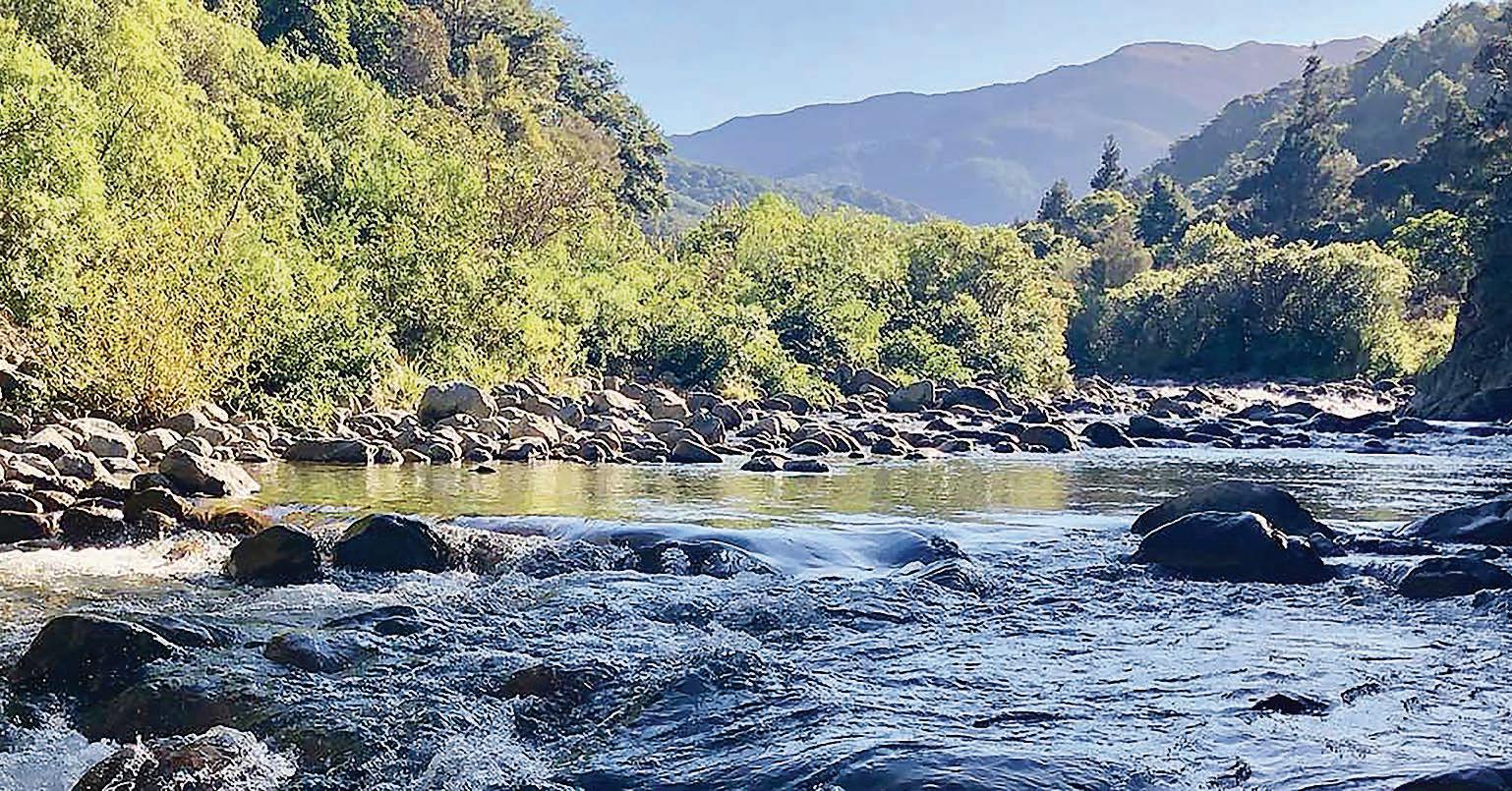
That isn’t sustainable. What is most welcome is that all three coalition parties are committed to reform.
Associate Minister of Agriculture and NZ First MP Mark Patterson was positive about developments and “encouraged” by the prime minister’s statements. Regional Councils need to adapt to the government’s fast-track legislation and encourage water storage. He felt that in the past it was often hard to get things done “for dubious reasons”.
I’m happier with those ministers making decisions than I am with regional government telling me what I can and can’t do.
As well as being associate minister of agriculture he holds the associate minister of regional development portfolio and is minister for rural communities. He “couldn’t be more supportive of water storage and irrigation”. He is “committed to making sure it happens”.
He argues that “now is the time to get the show on the road”.
I came away from our discussion in a really positive frame of mind. Patterson understands farming and rural issues. As minister for rural communities he is in the box seat to make things happen. I’m confident he will.
Select Committee chair and ACT MP Mark Cameron was also highly supportive. His statement to me was that “if you want to build a dam on private land and it’s not affecting anyone else, go for it”.
National’s Mike Butterick told me that “water is about jobs, about protecting what’s here and creating a future”.
He added that “growing isn’t complicated. You just have to add water”.
It’s hard to argue with that.
That the current system isn’t working was graphically illustrated by the treatment Wellington Regional Council gave to local farmer Len French, who has developed a 13 hectare irrigation dam.
French took four years and spent $400,000 before a sod could be turned. He suggested that the regional council didn’t know what to do.
There was an additional
$280,000 required for non-dam conservation work, which was ridiculous.
Another issue was that anyone could submit against the proposed dam without any interest in it, which is farcical. Wellington Regional Council also argued that the dam was on a wetland. French also had to deal with issues of fish passage, again at considerable expense.
The dam is now up and running with the French flats an oasis of green in an otherwise desert of brown. It is a credit to their perseverance that the dam is built and is working.
For all those reasons I’m totally supportive of the government initiatives to encourage water storage.
I also welcome the fast-track legislation as in this instance having central government taking control is the right thing to do.
Regional government has consistently shown its inability to approve water storage projects quickly and cost effectively.
What farmers need to do now is to get water storage proposals together and put them forward. The time is right.
A reserve bank for the environment
Eating the elephant

WILL they raise, or will they hold?
When exploring levers, it’s hard to go past the power of the Reserve Bank of New Zealand to set the Official Cash Rate – a lever that moves the New Zealand economy.
A mega-lever, the OCR controls a mega-outcome, inflation. Simple. But like all things simple, this overnight success took 90 years to achieve.
The RBNZ has been in operation since 1934, with an initial mandate to provide exchange rate stability. Fast-forward to 1989, and the RBNZ blazed a new trail that many other central banks would follow – announcing that it would focus only on keeping inflation within a desired range.
Inflation is considered a proxy for economic health as it balances consumption of goods and supply of money.
In this series, the lads discuss levers.
A spike in inflation, like that we have recently felt, is caused by
too much money chasing too few goods.
The goal of the Reserve Bank is to pull the OCR lever just as an economy fuelled by cheap money starts to chase too few goods. Put another way, its job is to take the punch bowl away just as the party gets going.
When the lever is pulled, and rates rise, we collectively know that we are in for a stint of pain. Additional spending stops as we switch from Wattie’s baked beans to Pams.
No one can complain in isolation, because the lever being used is so big that it affects the whole economy. It may not affect everyone equally, but the resulting effects are deemed to be fair.
This breeds an element of collectivism where weathering rising interest rates is almost a badge of honour that unites people.
Your level of debt load, or financial leverage, determines
the effect a rising OCR has on you. Those with a high degree of debt, which includes most food producers, begin to feel pain as the OCR raises.
Those with savings in the bank enjoy a rise in the OCR as it offers a higher return on safe assets like term deposits. There is a parallel between the journey of the RBNZ and the Climate Change Commission (CCC). The CCC has only just begun its journey, and much like the early days of the RBNZ, its mandate is broad. Its very broad purpose is to ensure NZ makes progress towards emissions reduction goals.
It does have a lever – setting the price of a New Zealand emissions unit or NZU, the price for one tonne of carbon. But unlike the Reserve Bank, it does not have direct control over this lever. At this stage, it can only influence ministers to use the lever as it suggests.
In time, it’s likely that the CCC’s ability to influence the market more directly will increase. But the real question is by how much?
In time, it’s likely that the Climate Change Commission’s ability to influence the market more directly will increase.
What would it look like if the CCC was officially the Reserve Bank of the Environment? Its lever might be something equivalent to pricing emissions and its mandate may be controlling environmental inflation – too much production coming from too few natural resources.
In this scenario, those with environmental leverage (a high level of natural resource consumption) would have to
Continued next page
14 Opinion FARMERS WEEKLY – farmersweekly.co.nz – March 18, 2024 Opinion 14
CANNED: The Wakamoekau water storage scheme in Wairarapa was canned largely because of the costs involved in the consenting process, says Alan Emerson.
David Eade
David Eade is a Whanganui sheep and beef farmer with a finance background, specialising in investments within the primary sector. eating.the.elephant.nz@gmail.com
A2 milk journey is only just beginning
The braided trail
 Keith Woodford MD at AgriFood Systems kbwoodford@gmail.com
Keith Woodford MD at AgriFood Systems kbwoodford@gmail.com
IHAVE been involved with the A2 milk journey since 2004 when I first started writing about A1 and A2 beta-casein. In 2007 I wrote the book Devil in the Milk about A1 and A2 betacasein and the associated milk politics. That caused quite some controversy.
A United States edition followed in 2009, then a New Zealand update was published in 2010, and in 2018 there was a Russian language edition.
There were also requests more recently for an edition in other languages, but I turned those down because I knew that a totally new version was required to bring things up to date.
I had planned for that to be written in 2023, but my own health issues got in the way and it is still sitting on the back burner. Time will tell.
In the meantime, my recent article on Synlait, “What does Synlait’s future look like?” (March 4) and its problems, including the disagreements between Synlait and The a2 Milk Company, has led to email correspondence with readers asking what is happening within the overarching A2 milk category? It seems to have gone quiet, they say.
Yes, it has gone relatively
Continued from previous page
tighten their belts and those with limited environmental leverage would be rewarded.
Those who are efficient convertors of energy would grow, produce more goods, and employ more people.
Those who are not would be slowly restricted.
Repurposed financial products and incentives, like green loans and clean car discounts, would not be required, as all lending initiatives would be focused on improving productivity from fewer natural resources.
Much like a raise in the OCR, there would be no room for complaining as the results of pulling the lever would affect the whole economy.
Would jobs be lost if the Reserve Bank of the Environment pulled hard on the pricing emissions lever, say in the aftermath of NZ missing a critical climate goal that jeopardises a trade relationship
quiet, but it is far from dead. The supermarket where my family buys milk sells three brands of A2 milk, sourced from three different suppliers, these being Fonterra, Lewis Road and Fresha Valley.
There is also a broad range of micro brands at regional level. There are at least three brands of A2 infant formula sold in New Zealand, and there is A2 ice cream from Appleby in both my supermarket and my fridge.
First, some clarity on the difference between “a2 Milk” and “A2 milk”. The first of these terms with the small “a” is a trademark of The a2 Milk Company, which pioneered the concept of A2 milk in New Zealand and globally.
In contrast, “A2 milk” with a capital “A” is a generic category of milk where all of the beta-casein is of the A2 type.
The term “A2 milk” is a term that I and others were using long before the trademark “a2 Milk” came into existence. Accordingly, and linked also to A2 being the original natural form of beta-casein, there are no patents relating to the milk itself. Hence, there should also be no trademarks preventing any dairy company from marketing milk labelled as “A2 milk” as long as it is free of A1 beta-casein.
However, The a2 Milk Company is very litigious and new entrants to the category get a “cease and desist” letter for using “A2 milk” to describe their products.
Small companies are typically scared to take on a company like The a2 Milk Company, which has more than $750 million in the bank, no debt, and is now back in the NZX10. Often they try to avoid the threat by using terms like “A2 protein” or “A2 infant formula”.
The a2 Milk Company still likes to throw its weight around in regard to whether those terminologies are acceptable, but it did lose two recent contests about A2 trademarks with Danone and Theland. We may not have heard the end of the trademark disputes.
with a low-emitting partner like the European Union? Probably.
But is that any different from the

TIPPING POINT: The a2 Milk Company is very litigious and new entrants to the category get a ‘cease and desist’ letter for using ‘A2 milk’ to describe their product – but the A2 beta-casein term predates the firm, says Keith Woodford.
Only limited clinical research has been undertaken recently. This is in part because A2 products cannot be patented as such.
The renaming of A2 Corporation to The a2 Milk Company and the registration of a2 Milk as a trademark was a clever commercial ploy, which arguably should never have been accepted, given the confusion it creates.
The key point to remember here is that in anything I write, the use of “A2” or “A2 milk” refers to a category of milk where all the beta-casein is of the A2 type. Any term using “a2” by itself, or at the start of a word, refers to products of The a2 Milk Company or other companies that it has licensed. For example, Fonterra’s a2-labelled milk is produced by Fonterra itself, but Fonterra pays a fee to The a2 Milk Company to use the trademark.
The a2 Milk Company, the biggest A2 marketer in the game, currently purchases all of its infant formula in a consumer-ready
recession-edging treatment the Reserve Bank is putting us through now? We probably wouldn’t accept
state from Synlait. It is currently the fifth-largest marketer across all infant-formula categories in China, not just the A2 category.
After exceptional growth between 2010 and 2018, such that The a2 Milk Company was the largest company on the New Zealand stock exchange of any type, things have definitely quietened down. There are at least four contributing reasons for this.
The first reason was that a2 Milk was hit hard by covid. It had been very entrepreneurial in its alliance with daigou, who were local Australian Chinese in Australia who themselves wished to send the product to China-based colleagues. With covid, this trade fell apart.
The second reason is that only limited clinical research has been undertaken recently. This is in part because A2 products cannot be patented as such. So, no dairy company is willing to fund major research that other dairy companies will also benefit from. Also, lack of patents means that none of the pharmaceutical companies that fund development of new drugs are going to research the health implications of A1 versus A2 beta-casein.
that treatment now, but after a few more Cyclone Gabrielles and Auckland flooding events? Maybe.

The third reason is that most global dairy companies are in the A2 business purely for riskmanagement reasons. They cannot afford not to have A2 products in case the A2 message suddenly becomes dominant in the media and they are left behind.
With the exception of The a2 Milk Company, whose business is solely related to A2 products, and similarly with several niche companies, life would be simpler for dairy companies if the issue simply went away.
The fourth reason is that most of the health conditions linked to A1 beta-casein are chronic conditions. This means they result from longterm exposure. This makes it very difficult to do clinical trials. This is the same reason that clinical trials have never proved that smoking causes cancer, and why it took so many decades for powerful smoking-related health messages to become effective. It makes for a long journey.
The areas where it has been easiest to conduct clinical trials relate to digestive effects, reaction time and brain fog. This is because the effects occur within minutes and hours. It is therefore feasible to measure these effects directly in humans.
The irony is that although scientific knowledge continues to build, that information is not yet transferring efficiently to the general population. Another irony is that NZ is further down the track of dairy-herd conversion to produce milk free of A1 betacasein than any other developed country. It could have been a winner.
A third irony is that human milk is of the A2 type, as are sheep milk, goat milk, and indeed all mammals apart from the European breeds of cattle, where an ancient mutation has caused many modern dairy cows to produce A1 beta-casein.
Good science always wins out in the long run, but it can be a long journey with many twists and turns.
This might sound very dystopian to some, but the world’s trajectory is slowing inching in this direction. There is a growing emphasis on meeting environmental goals –evidenced by the passing of the Biodiversity Bill in the EU and the Nature Repair Bill in Australia.
To reach our net-zero goals, we are all required to become more efficient energy convertors, which will likely require a mixture of utilising new and existing technologies. We’ll also need new frameworks – like a reserve bank for the environment – that seem pretty ridiculous now, but may be called on in a future of climate breakdown.
The NZ primary sector would probably do well under such a framework. Like the savers who smile when the OCR rises, our ability to provide habitat, store carbon and efficiently produce valuable products by harvesting energy flows of light, water and soil puts us on the right side of the ledger.
15 FARMERS WEEKLY – farmersweekly.co.nz – March 18, 2024 Opinion 15
POSTIVE MARKERS: The NZ primary sector would probably do well under a framework such as the Reserve Bank of the Environment, says David Eade.
Looking for a more just and productive Welcome to Country
Indigenous men and women make up only 2.5% of Australia’s farmers, and that’s something Worimi man Josh Gilbert is working hard to change. Richard Rennie reports from Canberra.
AS AN Aboriginal farmer, Josh Gilbert is a rarity, walking between two quite different worlds calling on his sector to confront its difficult past, and hoping for reconciliation in the years to come. His family are fourth-generation graziers in the Gloucester region of New South Wales, but his people have lived in the district’s mountains and hills for over 40,000 years.
As a Worimi man of First Nations descent who has chosen to farm on his native lands, Gilbert represents a minority of a minority.
Despite native title comprising 56% of Australia’s pastoral land and First Nations people claiming freehold title to 17% of the country, native farmers comprise only 2.5% of the country’s farmers.
It’s something Gilbert is working hard to change, while also raising awareness about climate change on the land, and the role of native land practices in helping to ease its impact.
In the past decade he has shown an innate ability to reach across cultures, and along the value chain of Australian farming.
It is an ability that has had him recognised by the Australian Geographic as the young conservationist of the year, be nominated as a Young Australian of the year finalist, and win praise for his efforts in gaining greater recognition for the native foods sector.
Pastoral Australia’s relationship
with First Nations people has always been a difficult, painful one.
Gilbert does not mince words describing the impact the country’s largest pastoral operator, Australian Agricultural Company, had through land seizure and community disruption, labelling it a form of planned extinction in its early days.
Then there is the Vestey Corporation, whose history of land tenure and treatment of First Nations people was memorably recorded in the Paul Kelly song From Little Things Big Things Grow.
It documented the historic Wave Hill Walk-off of 1966, when Vincent Lingiari led his people off the land in protest at appalling work conditions.
“There is a real need there for more truth telling and acknowledging agriculture’s role in that history,” Gilbert says.
The 12,000 First Nations people engaged in farming in 1901 in Western Australia greatly outnumbered the estimated 6500 across all of Australia today, Gilbert points out.
With younger First Nations people forming the fastest growing demographic in Australia – and often living in areas with poor employment opportunities – he sees agriculture as a pathway for many to improve their lives and communities on land they are often owners or dwellers upon. At present Australia only has
five First Nations agricultural graduates a year.
“At that rate it means it will take 1600 years to match the representation Native Americans get in the United States. There are about 8000 Native American farmers now, we would be lucky to have 100.”
He is optimistic, however, that more First Nations people will be drawn to the sector in coming years, in a way that is representative of Australia’s growing acknowledgment of its dark past.
A common means to try to address past racial issues is for organisations to conduct reconciliation action plans.
These formal approaches administered by third parties have participating organisations undertaking programmes to strategically take meaningful action to advance reconciliation.
Gilbert is heartened to see this at last being picked up by the primary sector, kicking off with the Grains Research Development Corporation taking on an action plan in only the past month.
“But this does still leave quite a few other industry groups to do one. We have the likes of Meat and Livestock Australia and Dairy Australia, for example. There have been 2000 plans done by companies, but agriculture is only just getting started.
“The best thing we can do as an industry is engage the plans and

Here we are today, needing to get rid of that image of agriculture being the old white guy on a horse in a wide-brim hat with his dog.
Josh Gilbert Worimi farmer
have events and really focus on diversity in the workforce.” He looks to the US at efforts made there to repatriate and engage Native American farmers as offering a good template to follow in Australia.
He puts the US about 40 years ahead of Australia with its native farming achievements but is optimistic it will not take 40 years for Australia to catch up.
“The government engagement is more now than even two years ago, and 10 years ago we would not have been having this conversation at all. It would have been far more divisive.”
The recent Indigenous Voice referendum did not go the way he would have liked, and he acknowledges his disappointment but accepts it is broadly reflective of Australian society, for now.
“And here we are today, needing to get rid of that image of agriculture being the old white guy on a horse in a wide-brim hat with his dog.
“We need to be able to share an image of agriculture we can all be proud of as a nation.
“That requires our own selfdetermination, an ability to be able to rock up to the table and get recognition, representation and relationships that matter.”
Meet the go-getter behind Meat the Need
The co-founder of the charity drive is an example of the innovative women NZ dairy celebrated on International Women’s Day.
SIOBHAN O’Malley is a dairy farmer, innovator, businesswoman and community volunteer. A great example of the thousands of Kiwi dairy farming women throughout New Zealand who multi-task every day to contribute positively to their communities.
For O’Malley, there’s never a dull day – she’s also a high school teacher, president of her children’s gymnastics club and a small business owner. Her family enjoy being involved in sustainability initiatives.
DairyNZ GM Alyce Butler says International Women’s Day (on March 8) was a great opportunity to celebrate the amazing contribution of rural women across all aspects of Kiwi life.
“About one-third of dairy farmers are women and they contribute hugely every day to
our sector, communities, local economies, schools, sports and sustainability initiatives,” Butler says.
“The dairy sector is evolving and becoming a more inclusive and diverse workforce with varying needs and wants. We’re developing new ways of working – different milking schedules, varied rosters and new technology – all of which support efficient farm systems and inclusive workplaces.”
O’Malley and fellow dairy farmer
Wayne Langford co-founded the Meat the Need charity, which helps feed Kiwis in need so they don’t go hungry. Farmers throughout the country donate meat and milk, which the charity provides to foodbanks and other community groups dealing with food poverty in New Zealand.
“I get involved in my community in the things that I believe are really important and that I’m passionate about. By working together in our communities, we achieve so much more.”
O’Malley didn’t always live on a dairy farm. She grew up in Christchurch and graduated with a Master’s degree in classical
studies. She met husband Christopher when he was a tour guide in the Abel Tasman and later in Dublin, Ireland. They went dairy farming together after Christopher worked for his brother, who was sharemilking, and fell in love with it.
The couple own their own farm in Hokitika and enjoy teaching their children about farming and the environment. They plant native trees on their property,
FAMILY: Behind many great women is a great family. Dairy farmer Siobhan O’Malley with husband Christopher and children Finnian, 12, Ruairi, 7, and Aisling, 10.
which give native birds places to rest and feed.
“With farming, I love being the master of my own destiny and the whole family is involved. Our children Finnian, 12, Aisling, 10 and Ruairi, 7, know more about running a business than I did at 18,” O’Malley says.
On the business side, O’Malley and two farmer friends she met at the Kellogg Rural Leadership course have created luxury

knitwear company, Hemprino – an e-commerce start-up.
Hemprino is made from hemp fibre and merino wool.
“The hemp fibre strengthens the merino and the knitwear is soft. It’s biodegradable, which is important to us – we believe everyone should be reducing their environmental footprint where they can,” O’Malley says.
South Auckland dairy farmer Amber Carpenter is also making a difference to her local community and New Zealand.
After a career in fashion, she swapped high heels for gumboots to focus on the family farm with husband Fraser. She says farming is a great career allowing her to be at home with her children Oliver, 6, and Noah, 3.
Carpenter chairs the Dairy Environment Leaders – a network of 400 environmentally focused farmers created by farmers, DairyNZ and the NZ Farm Environment Trust in 2007. The network aims to empower leadership and create opportunities to support and share on-farm actions to reduce environmental footprint.
16 People FARMERS WEEKLY – farmersweekly.co.nz – March 18, 2024 People 16
FIRST PERSON: Josh Gilbert is part of an emerging group of First Nations agriculturalists intent on lifting the level of representation his people have in Australia’s primary sector.
Disease management at grassroots level
AgResearch has launched a survey to gauge on-farm awareness about diseases that affect pastures and how they are managed and controlled. Annette Scott reports.
NEW Zealand farmers are well aware of the biosecurity risks of animal disease like Mycoplasma bovis or foot and mouth, but there are diseases of plants that can also have serious impacts on pastures and forages.
Little is known about the impact of these diseases on pastures or how they are managed or controlled on farm.
AgResearch scientists want to plug that major knowledge gap by reaching out to farmers – a timely move, given several recent pest incursions and biosecurity threats.
The pathogens (germs) that cause diseases in pasture plants such as crown rust and clover rot can have significant costs for farmers and the wider NZ economy.
In a changing climate the concern is that those losses will escalate.
AgResearch science team leader Kwasi Adusei-Fosu says there is a real gap in awareness and understanding about current diseases and the impact they are having on pastures, as well as potential future impacts.
“By building our knowledge around pasture diseases, we are also helping raise awareness and preparedness for threats to NZ’s biosecurity, including the risk of new disease-causing organisms that could invade NZ,” AduseiFosu says.
The last time NZ’s formal
research on this topic was reviewed was in 1996, and before then in 1965.
“The lag could be because study of the impact of pasture diseases is more speculative in nature, poorly understood or neglected.”
Adusei-Fosu and his colleagues at AgResearch have prepared an online survey aimed at farmers, to gauge the level of understanding of diseases present in NZ pastures.
It is asking farmers to provide feedback on grass, pasture and forage crop diseases or pathogens and the management methods they are using against pasture and forage crop diseases.

COSTS: AgResearch scientist Kwasi
“Farmers don’t need significant knowledge of pasture and forage diseases to take part.
“In fact, one of the aspects the survey is probing is whether farmers have the ability to identify a disease, or enough support from the likes of the Ministry for Primary Industries (MPI) and scientists to confirm diseases.”
Adusei-Fosu’s current research includes screening and testing pasture grasses from South Africa against other strains of rust pathogens to see if they can offer lessons for NZ as climate change impacts begin to bite.
“That’s the kind of work going on, but I realised it would be fantastic to hear from farmers, farm managers and agribusinesses on what they’re seeing in their operations and in the screening experiments they’re doing as part of the process of producing seeds and coming up with new seed lines.”
Survey results will also inform an AgResearch programme aiming to reduce synthetic pesticide inputs on farm.
A second survey to be conducted later will focus on understanding grower awareness of key insect pests and their current control methods.
With the recent incursion of fall armyworm and potential for other biosecurity threats, it is also timely to update knowledge in this space, Adusei-Fosu says.
The survey is funded by AgResearch’s Strategic Science

TIMELY: The recent incursion of Fall armyworm and potential for other biosecurity threats makes it timely to update knowledge in the pasture disease space.
The lag could be because study of the impact of pasture diseases is more speculative in nature, poorly understood or neglected.
Kwasi Adusei-Fosu AgResearch
Investment Funding and has received human ethics approval from Manaaki Whenua Landcare Research Human Ethics Committee.
Responses will be anonymous. The survey will not ask for any personally identifying information. Raw data will only be available to the research team and will be
stored in an encrypted format within the AgResearch database with responses used to inform further research on pasture and forage pathogens and prepare an open access publication.
Results from this survey will be shared through a webinar for farmers and industry, highlighting the potential contributions that researchers can provide to target specific areas of priority for farmers.
Results will also be used for an open access science publication, available to all farmers.
The pasture pathogen survey can be accessed at: https://www. surveymonkey.com/r/YR68GHJ
Farmers and industry professionals who participate in the survey will go into a draw to win one of five $100 Prezzy cards.
Results trickle through from Gabrielle silt trials
Plant & Food Research launched a project in October called
TRIALS to gain a better understanding of how key vegetable crops respond when grown in silt-affected areas are underway in Hawke’s Bay.
Flooding during Cyclone Gabrielle resulted in several million cubic metres of silt being dumped on orchards, farms, roads and properties.
Our initial findings indicate that small-seed crops may struggle to establish in the silt as their roots may have less vigorous growth early on.
Dr Eduardo Dias de Oliveira Plant & Food Research
These extensive layers of silt, or alluvium, have adversely affected soil conditions, posing challenges to cultivation. In Hawke’s Bay, some vegetable growers have retired plots of land while they weigh up the viability of resuming farming in these areas.
Promoting Crop Resilience in SiltAffected Landscapes, designed to help address these challenges faced by growers and industry.
The work is being funded by Plant & Food Research, with the first stage of the project expected to be completed by June.
“Cyclone Gabrielle has had a significant impact on horticulture, arable, and vegetable crop farmers in affected areas, resulting in extensive damage to cropping lands and significant financial losses,” said project leader, crop eco-physiologist Dr Eduardo Dias de Oliveira.
The research is being conducted on a commercial farm in Hawke’s Bay that was impacted by alluvium in the 2023 cyclone event. One hectare of land with varying silt depths was planted in four different vegetable crops — carrot (small seeds), peas (medium seeds), maize (large seeds), and transplanted broccoli.
These crops are economically significant in the region and have diverse seed sizes and root structures.
“Silt has no defined structure, and we know very little about the dynamics of water and nutrients in

the silt,” Dias de Oliveira said. “Also, despite varying texture, silt is usually extremely fine, and that may reduce soil oxygen, and reduce root ability to grow and reach the original soil below the silt. That’s why we are doing this work, to understand how varying silt depths affect the performance of these crops.”
The trial site is being regularly
monitored to evaluate growth and yield and test the interactions of plant roots with the silt. Alongside this work, trials are also being undertaken in a greenhouse at Plant & Food Research’s Hawke’s Bay research centre, using different ratios of alluvium to soil to better understand how crops perform in these different conditions.
“Our initial findings indicate that small-seed crops may struggle to establish in the silt as their roots may have less vigorous growth early on. This may reduce their ability to explore the silt, absorb nutrients in the silt or reach the original fertile soil beneath,” said Dias de Oliveira.
The research project will aim at understanding how different management practices could enhance the resilience of the farms.
Some of the questions Dias de Oliveira hopes to answer through the project include: Should silt be stripped off immediately? Can crops grow into silt? Can the silt be incorporated into the original soil? What is the optimal depth for silt incorporation? And, depending on the chosen practice, what is the timeline for full farm recovery?
“These questions will guide our investigation into enhancing the overall performance and adaptability of these crops.”
The ultimate goal is to develop industry-specific resources that not only aid decision-making and facilitate a swift recovery from the aftermath of Cyclone Gabrielle but also contribute to future recovery efforts in the face of similar events.
17 Tech FARMERS WEEKLY – farmersweekly.co.nz – March 18, 2024 Technology 17
Adusei-Fosu says pathogens that cause diseases in pasture plants can have significant costs for farmers.
Staff reporter TECHNOLOGY Soil
FUTURE: Some vegetable growers have retired plots of silt-laden land while they weigh up the viability of resuming farming in those areas.
Farm incomes walking a climate tightrope

Richard Rennie in Canberra NEWS Finances
OMPOUNDING levels
Cof risk around climate impact and price fluctuations over the past 30 years have pushed Australian farm income volatility to an alltime high.
Work by Dr Neal Hughes, senior economist with the Australian Bureau of Agricultural and Resource Economics and Sciences (ABARES), has highlighted the impact price and climate variables have had as global commodity markets have become more uncertain.
For a typical Australian livestock property, that variability now encompasses a vast range of returns from between 150% above a median year to 125% below, when price and climate impacts are combined.
That level of variability might confound many New Zealand farmers, but their Australian counterparts have dealt with it by holding historically low levels of debt to equity on their farm businesses.
“Farms typically have a low level of debt and high equity in
response to the risks price and climate bring, with equity rate of about 90% varying relatively little over time,” Hughes said.
What Australian farmers have experienced in the past two to three years is an unprecedented further rise on paper of their equity levels, driven by substantial increases in rural land values, while debt has remained relatively static.
This has equity ratios at their highest point in the past 30 years. In 2022 the average livestock farm debt was only A$220,000 ($236,000), less than an average property’s annual revenue.
I tend to think it may really have been more of a communication issue. The Bureau of Meteorology has been thrown under the bus a bit.
Dr Neal Hughes ABARES
“So, farmers have been managing that risk by not taking on a lot of financial risk.”
While this outwardly makes sense, it has also placed a constraint on investment, and
on the ability to capitalise on potential productivity gains through that investment.
Australian on-farm productivity enjoyed a golden period of gains through the 1990s to early 2000s of about 2.4% a year, but this has plateaued lower at .6% a year in the past decade.
“Insurance (against climate) would be a clean solution, but we are a long way from solving the problem of viable insurance for the likes of drought,” Hughes said.
He said there was a role government and wider industry could play in planning for the level of events experienced in the past decade, which have ranged from extreme flooding to severe drought and back to severe floods in parts of Australia.
This would include work done on a national drought early warning system, running Australian Bureau of Meteorology (BoM) data through ABARES farm models, giving predictions down across a 5km-wide grid system that will ultimately be available publicly online.
The BoM came under some criticism this summer after predicted dry El Niño conditions did not materialise as widely as expected.
Hundreds of thousands of head
Fire ants spark panic in Australia

Richard Rennie in Canberra NEWS Pests
IN A country where vertebrates and invertebrates that bite and sting are part of the scenery, fire ants have Australian officials signalling an impending biosecurity disaster.
A Senate inquiry has begun investigating the impact red fire ants are likely to have on the environment, humans, agriculture and native wildlife, as the risk of previously contained infestations spreading starts to grow.
The small red ants were first discovered in Brisbane in early 2001 but had possibly taken up residence in Australia undiscovered for 20 years before that. They have spread to northern New South Wales, having been isolated earlier in pockets of Queensland.
The spread of the ants is much feared, partly because of the adverse effects their sting can have on humans and animals.
They reach extremely high densities and their ferocious bite delivers multiple small pustules that sting for several hours and risk becoming infected. Much of Australia’s mainland is suitable for the ant’s habitat.
The Senate committee has been told a national invasion of the ants could cost Australia AU$60 billion ($64bn) over 30 years, and shave 1.5% off the nation’s GDP.

ON FIRE: The ability of re ants to in ict painful stings is cited as likely to have a major impact on Australians’ way of life in future, with thousands of citizens likely to experience a degree of anaphylactic shock from the ants’ bites.
In scenes reminiscent of a vintage horror film, the marauding ants will feed on any nesting fauna, including spiders, lizards, frogs and mammals, displacing native species, wrecking ecosystems and even attacking bird species that feed on the ground.
The National Fire Ant Eradication Program’s website cites agricultural impacts of the ant’s invasion, which includes decimating more than 50 horticultural and broadacre crop types, destroying irrigation equipment, and even feeding on crop treatments. Their impact in the United States

of livestock, particularly sheep, had been offloaded in anticipation of a dry summer, sending local and export market prices crashing and taking the likes of NZ’s China lamb market with it.
Hughes said the BoM had been relatively open ended on what the summer would look like, and the outcome was within the range offered earlier on.
“I tend to think it may really have been more of a com-
has included a 35% reduction in potato yields in Florida and a 65% reduction in Mississippi corn crops.
They are even known to attack young livestock, stinging around their eyes, mouth and nose, leading to blindness and suffocation.
Multiple incursions have already been eradicated in Australia, but the latest data has the country on high alert, with blame being shuttled between bureaucrats on why action was not taken earlier.
Professor Helen Scott-Orr told senators a report she oversaw three years ago had disappeared until recently – which she said was extremely frustrating given its urgency.
She said eradication of the ant may now be impossible, with one former staffer likening it to the equivalent of putting a man on the moon.
New Zealand is recognised as the only country to have successfully eradicated the red fire ant. In 2009 then MAF Biosecurity declared victory in eradicating it at Whirinaki, north of Napier.
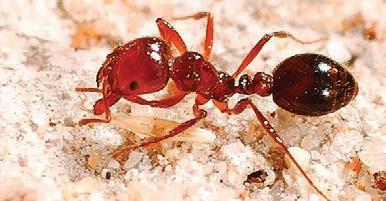
FIERCE: Fire ants can decimate livestock and native ora and fauna with their ferocious ability to swarm and sting.
munication issue. The BoM has been thrown under the bus a bit.”
He said there is always a challenge for the BoM looking three months out for a seasonal forecast, against farmers’ shorter term focus.
He also pointed to Australia’s Future Drought Fund, which is now in its next funding phase and helping to make rural communities and farm businesses more resilient to future events.

KICKED OFF: Each of the 5500 wellingtons outside the Senedd building in Cardi represents an agricultural job that is projected to be lost based on 100% take-up of the scheme, as based on gures from Welsh government’s own impact assessment.
Welsh farmers put boot in
Staff reporter POLITICS Sustainability
MEMBERS of the National Famers Union Cymru have created a symbolic display of 5500 pairs of wellies on the steps of the Senedd (the Welsh parliament) to represent the jobs forecasted to be lost through the Welsh government’s Sustainable Farming Scheme proposals.
The display was put together by farmers at the Senedd in Cardiff Bay on the eve of the closing of consultation on the scheme.
Each of the 5500 wellingtons outside the Senedd building represents an agricultural job that is projected to be lost based on 100% take-up of the scheme, as based on figures from Welsh government’s own impact assessment.
Farmers across the country united to gather 5500 pairs of wellingtons to bring the display to life. Boots provided for the
display will be donated to charities in Africa.
NFU Cymru member and display organiser Paul Williams said: “Seeing these 5500 wellies lined up on the steps of the Senedd is an emphatic depiction of the potential jobs that will be lost to Welsh agriculture if these proposals go ahead in their current guise.
“What makes our industry so special is the people and families for whom it’s more than just a job. We have wellies of all sizes and colours on display, representing those who have farmed for decades and whose families have farmed our land for generations, as well as those with smaller feet but big ambitions for a future in our industry when they are older.
“The [politicians] who have looked out on the display today from the Senedd must understand what is at stake and commit to ensuring the final Sustainable Farming Scheme proposals don’t harm Welsh businesses and communities.”
18 World FARMERS WEEKLY – farmersweekly.co.nz – March 18, 2024 World 18
FIRE ZONE: Dr Neal Hughes says ongoing modelling work means it is becoming possible to more accurately identify where Australia’s drought risks are likely to lie under di erent climate conditions.
FEDERATED FARMERS




















Farm con dence still a mixed bag
Farm con dence has lifted overall, but there are some big di erences in optimism levels between the industry groups.
Federated Farmers’ January
Farm Con dence Survey shows con dence has recovered since last July when the rural mood slumped to an all-time low in the survey’s 15-year history.
However, a deeper dive into the results shows variation between dairy, arable, meat and wool, and other farmers.
While all the industry groups saw improvements in their perceptions of current and future economic conditions, dairy stood out for having the biggest improvement since last July’s survey.
Federated Farmers national dairy chair Richard McIntyre says the main driver has been a lift in dairy commodity prices and forecast farmgate milk prices.
“It’s been a big relief to see the milk price going up – it’s essentially reached break-even point for most dairy businesses now – and it’s also looking positive for next year.
“It also looks like interest rates, which are a huge component in most dairy farmers’ farm working expenses, have reached their peak.”
McIntyre says dairy farmers’ input costs remain high, but annual rates of increase have eased.
The change in Government has also made a big di erence to the mood, he says.
“Dairy farmers have really felt the brunt of the regulation over the past
six years. It’s a ected all farmers, but particularly those with intensive systems.
“The new Government’s commitment to making sure the regulation a ecting farmers is workable and practical has brought a lot of positivity for farmers.
“That doesn’t mean there aren’t clouds on the horizon, like regional council plans, but there’s a feeling out there that things are going to get better – or at least won’t get worse.”
The new Government’s commitment to making sure the regulation a ecting farmers is workable and practical has brought a lot of positivity for farmers.
Richard McIntyre Federated Farmers dairy chair
Meanwhile, the survey showed arable farmers had the smallest improvement in con dence about current economic conditions and were the most pessimistic industry group, with 83.3% saying conditions were ‘bad’.
Asked about their current pro tability, 23% said they were making a pro t, 43% breaking even, and 30% making a loss.
David Birkett, Federated Farmers arable chair, says there’s not really much for arable farmers to feel positive about right now.
“For arable, and sheep and beef
farmers too, nothing has really changed much in the marketplace. The economics aren’t great.
“We saw really good grain prices last year with good access to a lot of contracts, but grain prices have dropped by about 30% this year and the number of contracts available has dropped by about 50%.”
While arable farmers can often bolster their income by bringing sheep in when grain prices are low, that’s not a viable option right now because sheep meat prices are also poor, Birkett says.
Compared to last July, arable farmers are feeling less pessimistic about where economic conditions are going in the year ahead and about their pro tability expectations.
“I think that lift in optimism will be because we have a new Government that’s moving to ease the regulatory load on farmers,” Birkett says.
“One positive thing is that we just had a really good harvest. If it wasn’t for that, con dence in the survey could have been a lot be worse.”
For meat and wool farmers, the survey indicates there’s a feeling that the only way is up.
Although 73.8% think current general economic conditions are ‘bad’, and 45.5% report making a loss at present, there’s been a big improvement in their expectations for future economic conditions.
Meat and wool also had a large lift in pro tability expectations –the largest of the industry groups – and it is now the least pessimistic industry.

Federated Farmers national meat and wool chair Toby Williams says those results match how he’s feeling and what’s he’s hearing from others in the sector.
“Meat prices have been falling for nearly two years, wool’s terrible, and we’ve faced sharply higher input costs – but there’s a feeling now that this is about as bad as it can get.
“We’re either at rock bottom or very near to it, so there’s more opportunities for it to improve than get worse.”
The farmers he’s speaking with locally are “doing it tough”, but
no one is talking about giving up, Williams says.
“They’re seeing it as a temporary blip, and we have to hope it really is just a blip.
“We can probably stomach another year of this before the banks start to get a bit scratchy.”
Federated Farmers’ next Farm Con dence Survey will be in July 2024.
Hear Wayne Langford and Auckland farmer Tim Dangen discuss the state of rural con dence in episode four of the Federated Farmers Podcast – fedfarm. org.nz/podcast.




You can find out more about it here: www.agrihq.co.nz/thefarmersvoice To join in with The Farmer’s Voice go to: www.bit.ly/agrihq-tvc The Farmer’s Voice is a new community for New Zealand farmers to share their ideas about what it is like to be a farmer today. We’d like you to tell us what is important to you as a farmer. We’ll share what farmers have to say with everyone who takes part and we’ll let industry and government decision-makers know what is important to farmers. It is FREE to join in and you could win one of three $500 Prezzy Cards just for taking part. Join the conversation, have your say... 19 Feds
Vol 2 No 10, March 18, 2024 fedfarm.org.nz
STILL BLUE: Aside from a good harvest this season, there isn’t much for arable farmers to feel positive about right now, Federated Farmers arable chair David Birkett says.
Federated Farmers back fast-track consents
Mark Hooper
Awater storage scheme in Kaikohe, a green hydrogen project in Taranaki, a solar farm in Rangiriri, a new hospital in Dunedin, a railway station in Drury, and the replacement of sewer pipes in Porirua.
All these projects have received a so-called Resource Management Act ‘fast-track’ under a mechanism introduced in 2020 to cut through red tape and actually make stu happen.
Activist groups like Greenpeace and the Environmental Defence Society call it “an assault on our natural world” or “a dark day for nature” – but do people really care what they think?
Most reasonable Kiwis would agree that all of these projects have made our country a better place to live from an environmental, social, and economic point of view.
It’s an unfortunate reality that, without a fast-track process, all these projects would have had a much more expensive, time-consuming and unpredictable consenting path.
In some cases, the projects may have never happened at all, with investors walking away from a proposal because the broken consenting pathways were too great a barrier.
This is a major issue that’s holding back the investment desperately needed to unlock the potential of our rural and provincial communities – and to grow New Zealand’s economy.
A fast-track scheme is a solution

PROGRESS: The new Dunedin Hospital, currently under construction, is one project that has benefited from the fast-track consent process.
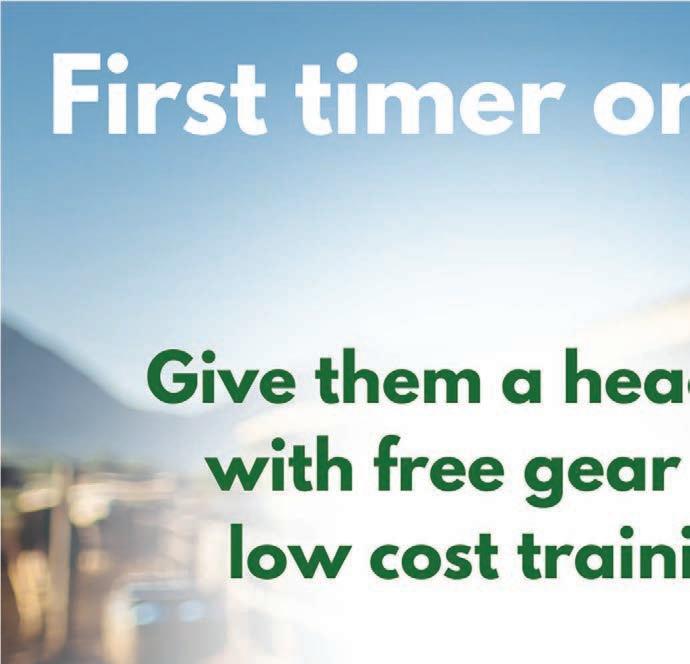
that’s been used by both Labourand National-led Governments to cut through the red tape of the Resource Management Act (RMA).
That being said, it’s far from perfect and there are plenty of issues with this approach. At best it’s a temporary solution to paper over the cracks in the current resource management system.
Unfortunately, a Ministerial process is always going to favour the big end of town rather than smaller businesses, but small businesses like farms face expensive resource consenting processes too.
There are also concerns that these kinds of approvals are overly political in nature and that without a Ministerial patron you’re unlikely to have much luck.
An irrigation scheme in Kaikohe may get onto a fast track purely because Northland is viewed sympathetically by the Minister, while other equally deserving projects in Hawke’s Bay, Canterbury or Wairarapa could miss out.
Those are legitimate concerns, and I don’t want to dismiss them, but does anyone have a better plan right now?
Ultimately, the only long-term solution here is a completely new resource management system that isn’t dependent on workarounds.
Until that system arrives, I’m a strong believer that we should continue to use fast-track consents as a short-term x.
The country can’t just sit around doing nothing while we wait for a new RMA to fall into our lap.
Now the Government have reinstated fast-track consents, they need to quickly turn their attention to the much bigger task of drafting new environmental and urban planning laws.
The tired and broken RMA system is responsible for so many of our country’s problems, from housing
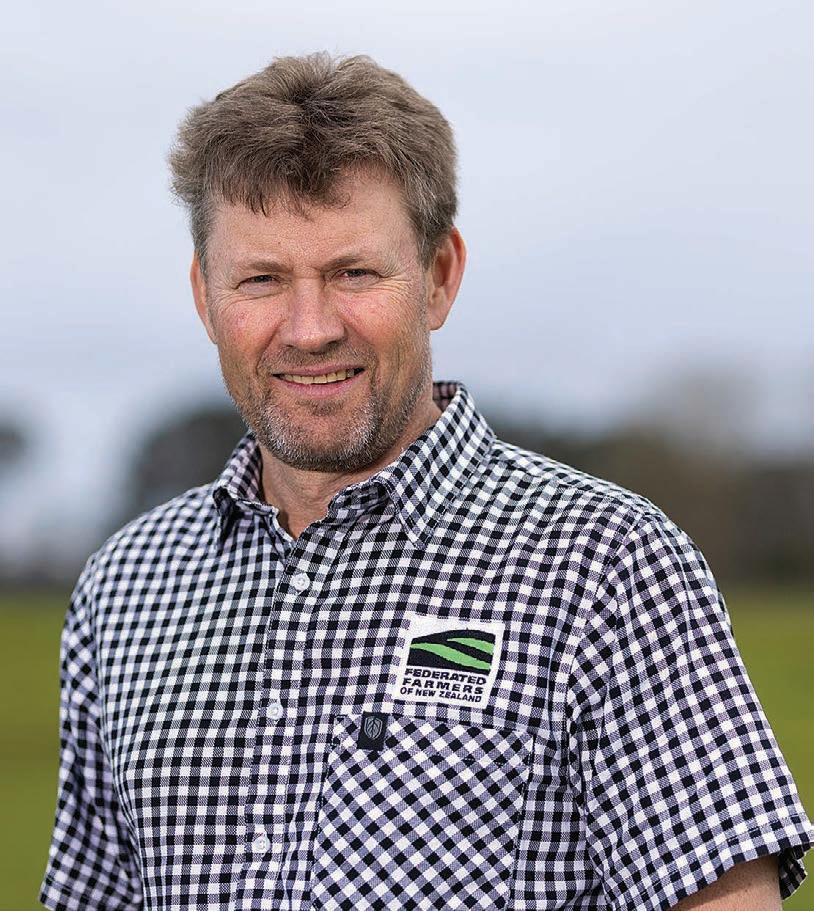
STOPGAP: Mark Hooper says a fast-track scheme is far from perfect, but it’s our best temporary solution until a new resource management system arrives.
This is a major issue that’s holding back the investment desperately needed to unlock the potential of our rural and provincial communities –and to grow New Zealand’s economy.
Hooper
and infrastructure through to farming and industry. An inability to progress new investment and move projects forward has held our country back by decades compared to where we should be – and all Kiwis are worse o as a result. While it would be fair to characterise the necessary reforms as
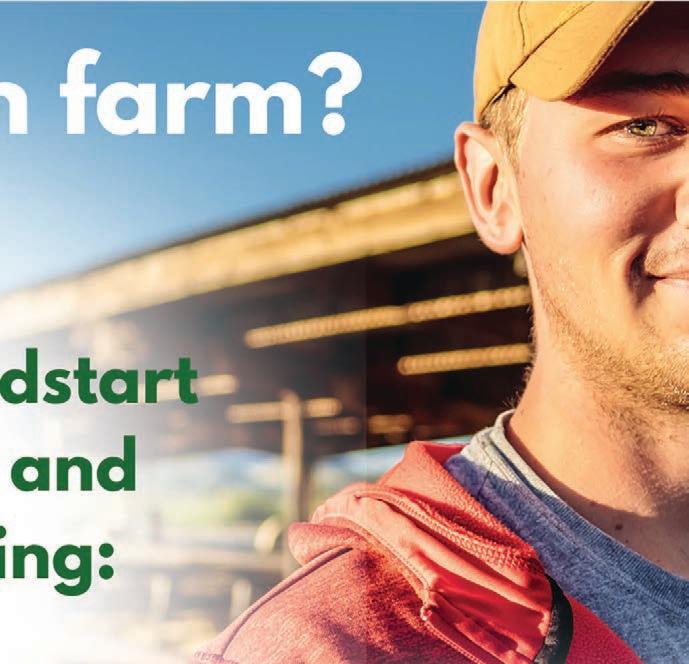
the Government’s biggest challenge, I also believe they present the biggest opportunity to transform our country and leave a lasting legacy. These reforms should be undertaken at pace. There’s absolutely no need to view this as some sort of multi-term project, and it shouldn’t take half a decade to develop a new law.
We don’t even need to design a system from scratch. There are plenty of other countries that deal with the same environmental trade-o s as New Zealand but have found ways to regulate these without grinding all development to a halt.
The real prize at stake here is an enduring resource management framework that gives Kiwis con dence to invest, get ahead and prosper.
Federated Farmers are asking the Government to make that framework a top priority over the next three years.



20 March 18, 2024 – fedfarm.org.nz Federated Farmers 20
Federated Farmers national board member
Mark
Federated Farmers national board member
Can the last shearer out please turn off the lights?
in recent years and inflation has continued to push up my costs of production, quietly eroding any last semblance of a profit I was making.
As a sheep farmer, I’m sick and tired of hearing how amazing wool is as a product. Not because I don’t believe it, but because it sure doesn’t feel that way right now.
Any time this topic rears its head, there will undoubtedly be somebody on hand to remind you what a great product we have and how the world just doesn’t appreciate it like it used to.
They’ll tell you wool could solve all the environmental problems synthetic fibres are creating or how we’re on the cusp of a breakthrough that will send demand, and prices, soaring.
The issue is that I already know all of this and believe it to be true. I don’t need another sales pitch on the virtues of wool – what I really need more than anything is a return to profitability.
For the better part of a decade, almost half of my sheep farming career, I’ve weathered loss after loss on wool.
Most years, the income my wool brings in doesn’t even cover the cost of shearing the sheep. In all honesty, the only reason I’ve continued to shear is for the welfare of my animals.
I’ve been able to absorb those losses because of strong meat prices and relatively low costs, but those days are quickly coming to an end –if they’re not gone already.
Lamb prices have fallen off a cliff
When you adjust for inflation, it’s forecast that the average farm profit will be at a 15-year low this season, with no signs of green shoots or recovery in the near future. The outlook is grim.
I don’t want to sound too pessimistic, because I’m actually a pretty optimistic kind of guy, but one does have to wonder: how long do we keep flogging a dead sheep?
Each farmer will make their own decisions about what’s right for their own family, business and community, but on my own farm we’ve reached a real turning point this season.

What’s become abundantly clear to us is that wool needs to start paying its own way very soon or it just won’t be able to stay as part of my farming system.
As a proud sheep farmer, with a long family history in the wool industry, that’s an extremely hard thing for me to say, but it’s a telling sign of the times.

We can’t be the only family sitting around our dining room table having these difficult conversations as we try to make things work. In fact, I know we’re not.
Just last month I was in Wellington meeting with some of New Zealand’s top farming leaders. As you’d expect, the future of wool came up for discussion.
It’s safe to say I was disappointed, but not surprised, to learn that over half the room thought the days of wool being considered an income stream were dead and gone.
Some in the room were looking to Wiltshires as a potential solution, while others were focused on diversifying their income and exploring alternative uses for their land that could prove more profitable.
Nobody in the room was happy about the situation, but they can no longer turn a blind eye to the pressures they’re facing. What choice do they really have?
Those pressures are the same ones that have seen more than 200,000 hectares of productive farmland converted to pine trees in the last five years alone.
That land will probably never be farmed again.
If we continue down the path we’re currently on, we risk waking up one morning to find we’re left with little more than a cottage industry supplying niche markets.
I don’t want to sound too pessimistic, because I’m actually a pretty optimistic kind of guy, but one does have to wonder: how long do we keep flogging a dead sheep?
That would be a tragic ending for an industry, and a product, that has given so much to the economic and social fabric of New Zealand.
So that begs the question: what are sheep farmers going to do about it?
Are we content to sit back and watch the future of wool slowly fade to black? Or are we going to stand up and fight for its survival?
FMG MEMBER DIRECTOR NOMINATIONS ARE OPEN.
FMG MEMBERS
Like many Kiwi farmers and growers, FMG’s legacy goes back a long way. We’ve been around for over a century through rural New Zealand’s highs and lows, and we’re in it for the long haul.
If you’re an FMG Member then you have an opportunity to play a closer part in this legacy—and are entitled to stand for election to FMG’s Board of Directors*.
Our Directors play a critical role in supporting FMG’s continued growth, as well as its core purpose of helping to build strong and prosperous rural communities. If you’re interested, read on and head to www.fmg.co.nz/news to see if you meet the criteria needed.
CRITERIA
FMG’s Constitution and Director Member Election & Special Director Appointment Policy (the Policy) require that a third of all Member Directors retire by rotation at each year’s AGM. This year Geoff Copstick and Debbie Hewitt are due to retire by rotation. Geoff will be seeking re-election. Debbie has opted not to stand for re-election. Consequently, there are two Director vacancies, with one being contested by a current Director.
The FMG Board would like to sincerely thank Debbie for her contribution to the Mutual and we wish her well.
MORE INFORMATION
If you would like to stand for FMG’s Board of Directors, please head to FMG’s website. Here you’ll find all the information you need, including The Policy, which sets out the criteria for the evaluation of Member Director candidates, including current Directors.
Applications to stand for election close on Wednesday, 9 April 2024.
FMG’S ANNUAL GENERAL MEETING
FMG’s 2024 Annual General Meeting will be held on Friday, 23 August 2024 in the Wairarapa. FMG Members will receive further details on this closer to the time, along with Member Election voting packs.
*More detail can be found on www.fmg.co.nz/news or by contacting FMG’s General Counsel Lisa Murray at lisa.murray@fmg.co.nz
here for the good of the country. 21 fedfarm.org.nz – March 18, 2024 Federated Farmers 21
We’re
NEW PLAN: If the wool industry continues down the path it is currently on, it risks waking up one morning to find itself little more than a cottage industry supplying niche markets.
Toby Williams Federated Farmers national meat and wool chair
Toby Williams Federated Farmers national meat and wool chair
FUTURE: Toby Williams says wool needs to start paying its way or it will not be able to remain a part of his farming system.
No need to rush Taranaki freshwater
Pressure is building to beef up Taranaki’s freshwater rules, but local Federated Farmers leaders are pushing back strongly on their regional council.
“The council needs to pump the brakes while we wait for the new Government to clarify their freshwater policy,” Taranaki Federated Farmers president Leedom Gibbs says.
“The Minister has made it clear there’s going to be a new direction of travel, so what’s the rush for Taranaki Regional Council?”
Gibbs says there’s absolutely no need for the council to “stubbornly press ahead” with implementing unworkable rules put in place by the previous Government that won’t be in place for much longer.
“If they just hit pause and wait for the new national direction, they could avoid a lot of unnecessary cost, complexity and confusion for our community,” she says.
At a meeting on February 27, Taranaki Regional Council noted the Government’s intention to replace the National Policy Statement for Freshwater Management (NPS-FM). It also acknowledged that the concept of Te Mana o te Wai, which places the health of waterways ahead of other considerations like human health and economic development, was set to be ‘rebalanced’.
Gibbs says the issue is that, although the deadline for councils to implement new freshwater rules has been pushed out until 2027, there remains a legal obligation for councils to give e ect to the current NPS-FM ‘as soon as reasonably practicable’.
“That means the council – and other councils around the country –really are stuck between a rock and a hard place,” Gibbs says.
“I don’t think it makes any sense to keep spending time and money implementing rules that the new Government have very clearly signalled are going to change.
“I’m just hoping common sense prevails and they make the right decision for our community.”
Taranaki Regional councillors are currently considering three potential courses of action.
They could continue with the current work programme and notify a new plan by the end of 2024, push that date out to mid2025, or delay implementation until the Government has released its replacement NPS-FM.
“We’re strongly in favour of the third option because it will ensure our freshwater rules are in line with the new national direction,” says Taranaki dairy farmer and Federated Farmers board member Mark Hooper.
“I can’t see why the council would risk locking in new rules for our community that go much further and faster than is required, especially if they don’t need to.
“Why not just wait a little bit longer and see what’s actually required by the new Government’s replacement NPS-FM before making any rash decisions with long-term implications?”
The new Government are set to replace the entire Resource Management Act (RMA), Hooper says.
“There’s a good chance we’re going to nd ourselves operating under an entirely di erent resource management system in the very near future.
“Labour’s RMA replacement law, The Natural and Built Environment Act, has already been repealed and a new framework is due to be introduced in the next three years.
“That could make this rushed plan e ectively redundant; it would need to be completely rewritten.
“The council would be wise to let the dust settle before making decisions and locking in additional costs for our community.”
He says Taranaki Regional Council is already signalling an eye-watering rate increase of 16.3%.
“You’d think the council would

say, everything pointed to better environmental outcomes.
You’d think the council would be keen to avoid adding to those rising costs going through planning processes that will turn out to be a waste of time.
be keen to avoid adding to those rising costs going through planning processes that will turn out to be a waste of time.”
Gibbs says while everyone wants to see improved water quality, earlier consultation rounds by the council tended to lead responses towards faster action.
“The consultation I attended was like a funnel.
“No matter what you wanted to
“There was no real opportunity to talk about other considerations, like the economic impact it could have on our community, potential job losses, or the future of farming in the region.
“That’s outrageous when you think of the importance of agriculture to our regional economy.”
She says considerable goodwill between the farming community and regional council has been eroded these past few years, along with local democracy.
“Federated Farmers says there’s much more work needed on that community capital before a new freshwater plan is implemented.
“That includes making sure the community truly understand the economic implications of environmental change, and that they’re empowered to develop local solutions at a catchment level.”
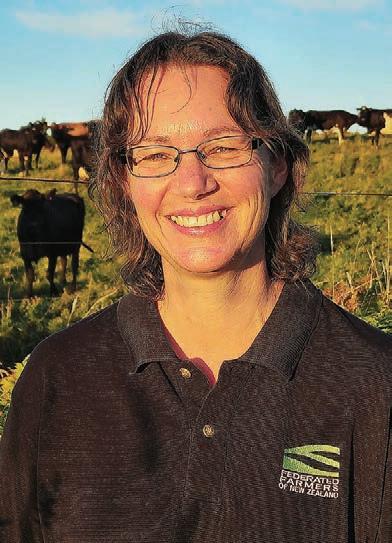
WHY NOW? It makes no sense for Taranaki Regional Council to spend time and money implementing rules that the new Government has signalled will change, Taranaki Federated Farmers president Leedom Gibbs says.



22 March 18, 2024 – fedfarm.org.nz Federated Farmers 22 ARE YOU A MEMBER? Yes! I'm on the team. NO? Let's talk. Join the conversation. Become a member today. 0800 327 646 fedfarm.org.nz
CAP IT: Taranaki dairy farmer and Federated Farmers board member Mark Hooper says the council would be wise to let the dust settle before making decisions and locking in additional costs for the community.
Mark Hooper Taranaki dairy farmer and Federated Farmers board member




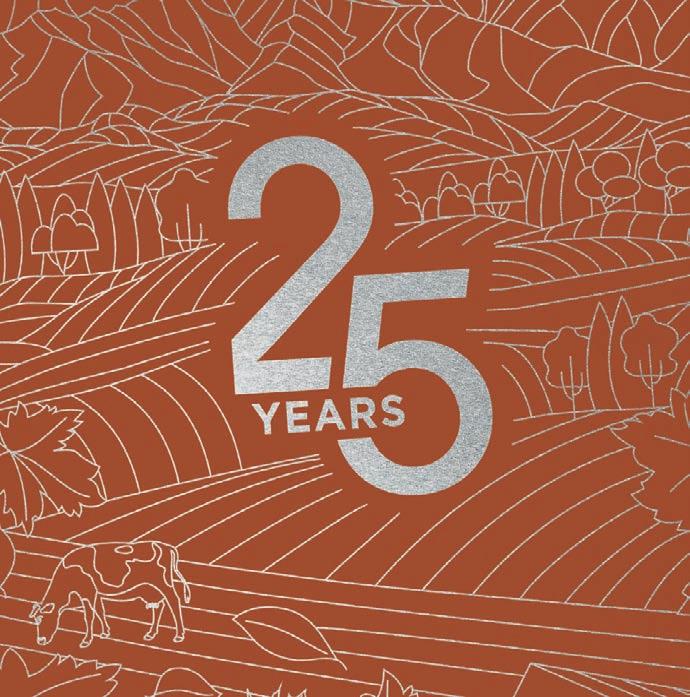







Residential / Commercial / Rural / Property Services This special edition of Bayleys’ Country Portfolio showcases the latest rural and lifestyle opportunities for sale from around the country and celebrates 25 years of connecting people with property. BUILD YOUR LEGACY WITH BAYLEYS’ COUNTRY RURAL RE AL ESTATE BR AND #1 For your copy of Bayleys’ Country Portfolio, call 0800 BAYLEYS or visit bayleys.co.nz/country. LICENSED UNDER THE REA ACT 2008 23 Real Estate



Mangawhai 1040 Pakiri Block Road, Tomarata
Coastal farm & lifestyle!
Rarely do properties of the
of this 114



Onewhero 215 Allen and Eyre Road
Genuine farm with an array of options
99.5
dairy farm present themselves in this
Pause and absorb the
views across both the sea and rural vistas to the Hen & Chicken Islands and beyond. Embrace coastal living with access to popular surf and swimming beaches, world-renowned golf courses, Mangawhai, and an easy commute to Auckland. The farm has a full set of infrastructure in place, and ready to go. Plus, lease the neighbouring 60-hectare block to boost your production further. Begin everyday with views and a world of possibilities!
Take a virtual tour: www.vimeo.com/918115564 bayleys.co.nz/1203881



An exciting opportunity presents itself with this tidy 99.5ha property. Suitable for sheep and cattle with a mixture of rolling to hill grazing pasture. A good range of infrastructure includes a three stand woolshed, loading race with crush, six bay implement shed, hay barn and yards. 120 bales of silage were made on plus 15ha of chicory with potential to add scope. Adding to the features is subdivision potential, native bush
View 11am-12pm Wed 20 Mar or by appointment
Peter Kelly 027 432 4278 peter.kelly@bayleys.co.nz
Angus Kelly 021 165 5031 angus.kelly@bayleys.co.nz SUCCESS

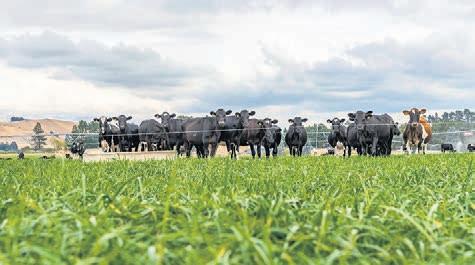

bayleys.co.nz
FINAL NOTICE
ha Tender (unless sold prior) Closing 1pm, Fri 22 Mar 2024
Queen Street, Warkworth View by appointment John Barnett 021
393 john.barnett@bayleys.co.nz MACKYS REAL ESTATE LTD, BAYLEYS, LICENSED UNDER THE REA ACT 2008
114
41
790
calibre
hectare
prime location.
panoramic
sold prior) Closing
Street, Hamilton
ha Tender (unless
2pm, Wed 17 Apr 2024 96 Ulster
LICENSED
REA
REALTY LIMITED, BAYLEYS,
UNDER THE
ACT 2008
and meandering creeks. Nestled peacefully with beautiful views over the surrounding countryside, the three bed home has been renovated with modern conveniences and quality fittings. bayleys.co.nz/2315401 Pukeatua 196 Waimanu Road 190.3646 ha Tender (unless sold prior) Closing 2pm, Thu 11 Apr 2024 96 Ulster Street, Hamilton View 10.30am-12pm Tue 19 Mar or by appointment Peter Kelly 027 432 4278 peter.kelly@bayleys.co.nz Angus Kelly 021 165 5031 angus.kelly@bayleys.co.nz SUCCESS REALTY LIMITED, BAYLEYS, LICENSED UNDER THE REA ACT 2008 Impressive farm package This 190ha picturesque farm offers it all. Operated as sheep and beef farm with the ability for intensive finishing, this is healthy country that delivers strong stock performance. An excellent array of infrastructure includes a three stand woolshed, six bay implement shed, modern Te Pari cattle yards and well set up sheep yards. With undulating contour, ash soils and a strong fertiliser history, 44ha is in chicory with a large percentage of mowable country. The homestead has prime position on a private elevated site with four beds, two baths, two living and double garage. The central location is half an hour to Cambridge, Te Awamutu and Putaruru. bayleys.co.nz/2315396 NEW LISTING North Canterbury 459 Inland Road, Waiau 269.9112 ha Deadline Sale (unless sold prior) 12pm, Thu 11 Apr 2024 3 Deans Avenue, Chch Phone for viewing times Ben Turner 027 530 1400 ben.turner@bayleys.co.nz Peter Foley 021 754 737 peter.foley@bayleys.co.nz WHALAN AND PARTNERS LTD, BAYLEYS, LICENSED UNDER THE REA ACT 2008 ‘Leebrook’ – dairy support A stunning property spanning 269.9112 hectares (more or less), extremely well set up for dairy support and finishing, nearby to Waiau Village in North Canterbury. A large area of development has unfolded over the past five years, enhancing the property's overall appeal and functionality. The region benefits from a generous average rainfall of approx. 900mm/pa, facilitating quality soil conditions and a diverse range of agricultural opportunities. The irrigation system features both pivot and gun irrigation and covers approx. 180 hectares. Nestled on an elevated sunny site the home offers a perfect blend of a rural home and natural beauty. The location, just 6km from Waiau, ensures the perfect balance between seclusion and accessibility. bayleys.co.nz/5522492 24








Link Realty Ltd. All information contained herein is gathered from sources we consider to be reliable. However, we cannot guarantee or give any waranty about the information provided. Interested parties must solely rely on their own enquiries. matamata.ljhooker.co.nz/KJDHR1 A flat 60 ha block (approx) within striking distance of Matamata. Crop, graze, mow, or milk off just as it has for the last 20 years as a dairy goat unit. Purchase the property as a going concern or alternatively, land and buildings only. Apart from the income derived directly off the land, there are three tidy homes you could rent out, or house staff in. An approx. 6,800 m2of shed space to winter dry cows in while leasing the balance out for covered storage. Then there’s a huge external concreted yard that could also be leased out for equipment and goods storage. Feed bunkers could be used to store a wide range of products. Our clients have done their part by being prepared to meet the market, now do yours by making us an offer. LJ Hooker Matamata 07 888 5677 Link Realty Ltd. 60 ha (approx) Support Block On Steroids Wardville Rd, Matamata Licensed Agent REA 2008 Deadline Sale Closes 28th March (unless sold prior) View By Appointment Only Agent Peter Begovich 027 476 5787 Rex Butterworth 021 348 276 DEADLINE SALE Link Realty Ltd. All information contained herein is gathered from sources we consider to be reliable. However, we cannot guarantee or give any waranty about the information provided. Interested parties must solely rely on their own enquiries. matamata.ljhooker.co.nz/KJKHR1 Spread across 29.36 ha (approx.) of pristine land, this property boasts flat sandy loam soil, ideal for a myriad of pursuits including grazing and cropping. Equipped with a reliable water supply courtesy of a bore, this parcel of land ensures a consistent supply to support your farming endeavours year-round. Additionally, the property features a 1920's three-bedroom home. For those with equestrian interests, the property comes complete with a wellappointed yard, arena, and a four-box stable complex, providing ample space for the care and training of horses. A four-bay implement shed offers convenient storage for equipment and machinery, while cattle yards cater to livestock management needs. LJ Hooker Matamata 07 888 5677 Link Realty Ltd. 29.36 ha Runoff, Maize, Equine 590 Wardville Rd, Matamata Licensed Agent REA 2008 Deadline Sale Closes 11th April (unless sold prior) View Wed 20th & 27th March 11 - 12pm Or By Appointment Agent Jack Van Lierop 027 445 5099 Glen Murray 027 488 6138 DEADLINE SALE 25 FARMERS WEEKLY – farmersweekly.co.nz/realestate – March 18, 2024 Real Estate 25
RURAL
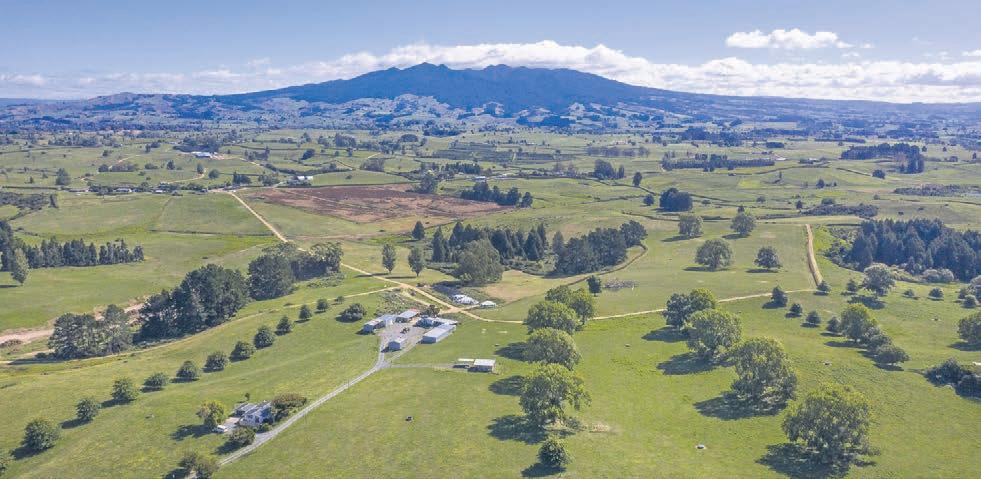

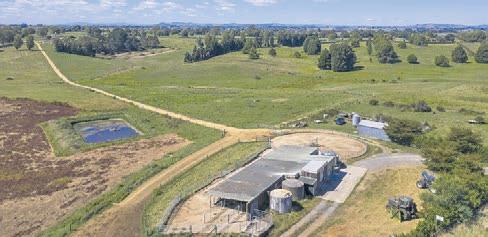
NGAHINAPOURI, WAIPA 117 Meadway Rd
Paterangi Potential
114
11.00am, Wednesday 17 April PGGWRE, 87 Duke Street, Cambridge
Wednesday 20 & 27 March
M 027 473 5855
B 0800 735 578
E pwylie@pggwrightson.co.nz








Kakaramea Road, Ngahinapouri This lifestyle property offers a peaceful and luxurious retreat. A three bedroom, two


Rosetown Realty Ltd Licensed (REAA 2008)


bathroom home with large bedrooms, a covered deck and in-ground swimming pool. Multiple sheds and garage with a back room for the teenagers plus double garage with internal access, stable and three paddocks. Approx 5822sqm of land 15 mins to Te Awamutu, 24 mins to Hamilton and Cambridge. Deadline Sale Closes 11 April 2024 at 4.00pm at Ray White Te Awamutu, unless sold prior View Sunday 17 March, 3.30 - 4.00pm 5822sqm New Listing Open Home 2 3 2 Pauline Love 021 155 4689 pauline.love@raywhite.com Howard Ashmore 027 438 8556 howard.ashmore@raywhite.com Accelerating Success. Otago Realty (NZ) Ltd, Licensed REAA 2008 7 Salmond Place, Queenstown, Otago For Sale by Auction Saturday the 6th of April 2024 at 11am. Unless Sold Prior. colliersotago.co.nz/67027747 James O’Hagan 021 909 323 james.ohagan@colliers.com For Sale A Legacy Property In A Prime Location Located in the exclusive and tightly held cul-de-sac of Salmond Place, on one of the largest residential sections in central Queenstown, this much loved property has been held in the same family’s ownership since 1976. It is now being offered for sale for the first time in almost 50 years. This is your opportunity to own a unique slice of Queenstowna legacy property steeped in character, brimming with potential and in a prime downtown location. 26 FARMERS WEEKLY – farmersweekly.co.nz/realestate – March 18, 2024 Real Estate 26 Book now and your online listing is free. Advertise here $830 + GST promotes your farm to every farmer in New Zealand 06 323 0760 | realestate@agrihq.co.nz farmersweekly.co.nz/realestate
PGG Wrightson Real
Limited, licensed under REAA
Helping grow the country
AUCTION
Estate
2008
pggwre.co.nz/TEK39182
(Unless
hectare (more or less) dairy farm. Very rarely does a property in Paterangi come forward to be sold, so this is your opportunity to enter this admired area. The fundamentals are all here. Very good soils, 36 ASHB shed, easy rolling contour, bore water, well maintained races, long established planting and this location is fantastic. Three-bedroom house and one bedroom cottage. Six bay implement shed, two and three bay sheds. Predominantly easy rolling contour. The vendor has indicated that this farm will be sold. See you at the Open Days. AUCTION
Sold Prior)
VIEW 10.00-12.00pm
Peter Wylie | LIFESTYLE | RESIDENTIAL rwteawamutu.co.nz/TEA30815
DEADLINE SALE
590






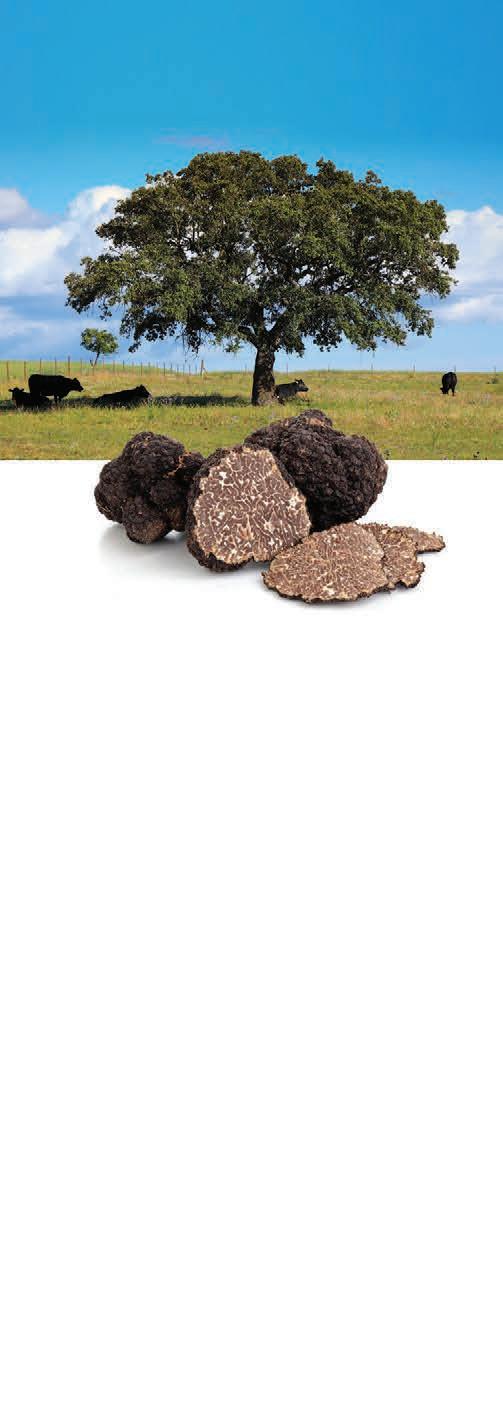
HORTICULTURE
NZ KELP. FRESH, wild ocean harvested giant kelp. The world’s richest source of natural iodine. Dried and milled for use in agriculture and horticulture. Growth promotant / stock health food. As seen on Country Calendar. Orders to: 03 322 6115 or info@nzkelp.co.nz
LEASE LAND FOR LEASE, 67 hectares of prime land located in the Waikite valley, plus silage or winter grazing. Phone 027 443 6565.
GRAZING LAND FOR lease approx 70 acres. WaiukuKohekohe area. Available 1st June. Long term preferred. Phone 027 493 0879.
LEASE LAND WANTED










or 0274 519 249. Feral goats mustered on a 50/50 share basis.
HAY/BALAGE FOR SALE
HAY SQUARE AT $75, Rounds at $85 plus GST. Wheat and barley straw available now. BALAGE EXCELLENT QUALITY, $75 per bale plus GST. Unit loads available for hay and balage. Phone 021 455 787.
HEIFER GRAZING AVAILABLE 100 R2 HEIFERS. May to May. Options for other classes of stock. Waikite Valley, Rotorua. Phone 021 162 9237.
2000-4000SU SHEEP AND beef lease block. Anywhere in New Zealand considered. Mid 40’s couple, approximately 30 years experience. References available. Phone Karyn 027 246 9668.
THE GULLIES Wiltshire & Low Input Rams. SIL; FE and worm tolerance. Lower your shearing costs. Look after your bottom line. Richard Morrison, 021 626 513, richard@thegullies.nz


PRIVATE HUNTING BLOCK
WE ARE A couple of semiretired active and responsible farmers from Northland looking for a private block to meat hunt on [deer] anywhere in the North Island. Happy to pay the going rate. Ideally any sort of shed/ shearers quarters to camp in would be great. Phone Trev 021 271 8878.
RAMS FOR SALE
WILTSHIRES-ARVIDSON. Self shearing sheep. No1 for Facial Eczema. David 027 2771 556.
WORK WANTED
A SEMI-RETIRED Grazier Farm-Hand is pursuing parttime/full-time employment. Considerable experience with machinery and agricultural/ Beef cattlehusbandry/ farming. All proposals-locations considered. Please email the advertiser: herefordsprings@ yahoo.com
Trees produce truffles at around year 7, producing up to 1kg a year by year 15. Currently black truffles are selling at $2,500$3,000 per kg, with high demand. It grows under them. CORK OAK TRUFFLE TREES Great stock shade and shelter with 0% loss of grazing land. Stock protector options are available for cattle, sheep & deer. Fantastic stock feed which is low tannin and high in carbohydrates. Produces up to 1 ton of acorns per tree each year. Extremely resilient. Fire resistant, stabilises erosion, frost & snow resistant to -9 degrees. Drought & heat tolerant over 40 degrees. Add value far into the future. Trees last over 200 years. Cork harvest income at year 25, then every 10 years. Potential carbon credits at 30% with a minimum 1ha canopy cover. For tree availability call 021 327 637 or visit truffles.nz LK0117099© 30% OFF FOR MONTH OF MARCH • South Island High Country Grand Slam Self drive your own 4WD from Blenheim to Cardrona in Central Otago through a network of high country tracks including Molesworth on this 7 day 8 night tour. • The Great Explorer Self drive from Lake Ohau to Cardrona through the majestic high country of the Mackenzie Basin, Central Otago and Northern Southland with this 5 day 6 night tour. For further information contact: John Mulholland RD1, RANFURLY Phone 03 444 9703 • Mobile 027 228 8152 lnfo@highcountryjourneys.co.nz www.highcountryjourneys.co.nz 03 LK0118089© HIGH COUNTRY JOURNEYS Drive from station to station and experience the majestic South Island High Country Limited spaces available for 2024 These Tours are; Fully guided with radio contact; Fully catered and stay in very comfortable lodge and farmstays; Made up of smaller tour groups (6-9 vehicles) and travel at a quieter pace. NOW TAKING BOOKINGS FOR 2025 EASTER SPECIALS! All kennels, runs and accessories – 5% off all orders until April 30th, 2024 • Kennel sizes range from Small to Extra Large. Our Medium and Large runs can come in single, double, treble and quad – the kennels are individual. The small run can come in a double • Troughs – 2.5L or 5L • Beds – heavy canvas sheep wool filled. Small to extra large • Run covers to fit ALL our run sizes LK0118166© Ph: 06 343 7053 • Mail@fivestar.org.nz 41 London Street, Whanganui Find primary sector vacancies at: farmersweeklyjobs.co.nz To advertise phone Julie 027 705 7181 LK0117420© MOWER MASTER MARCH SPECIAL Phone 028 461 5112 Email: mowermasterltd@gmail.com 12HP, diesel, electric start, 50 ton Heavy duty construction for serious wood splitting. Towable. To find out more visit www.mowermaster.co LK0118118© SPECIAL $3900 Splitter with hydraulic lifting table $4800 $4200 GO THE MOA! 27 Marketplace FARMERS WEEKLY – farmersweekly.co.nz – March 18, 2024 Marketplace 27 Advertise with us We wish to advise that due to the Easter public holiday, advertising deadlines move forward for the publication dates April 1st and April 8th. Contact your partnership manager for deadlines. LK0117695© DOLOMITE For a delivered price call .... NZ’s finest BioGro certified Mg fertiliser 0800 436 566 ATTENTION FARMERS ZON BIRDSCARER electro-tek@xtra.co.nz Phone: 06 357 2454 ELECTRO-TEK ENGINEERING Check out Poll Dorset NZ on Facebook nzsheep.co.nz/poll-dorset-breeders LIVESTOCK FOR SALE FLY OR LICE problem? Electrodip – the magic eye sheepjetter since 1989 with unique self adjusting sides. Incredible chemical and time savings with proven e ectiveness. Phone 07 573 8512 www.electrodip.com ANIMAL HANDLING MARK KIRYAKOS CPEng Geotechnical Engineer, general, earthworks, ponds, buildings, irrigation, tanks, Phone 021 262 2892, mdkiryakos@gmail.com ENGINEERING SERVICES WANTED NATIVE FOREST FOR MILLING also Macrocarpa and Red Gum New Zealand wide. We can arrange permits and plans. Also after milled timber to purchase. NEW ZEALAND NATIVE TIMBER SUPPLIERS (WGTN) LIMITED 027 688 2954 Richard. FORESTRY GOATS WANTED GOATS WANTED. All weights. All breeds. Prompt service. Payment on pick up. My on farm prices will not be beaten. Phone David Hutchings 07 895 8845







STOCK REQUIRED
• R1 Friesian, beef & beef cross bulls
• R2 Friesian, beef & beef cross bulls
• Weaner beef bulls, all breeds (premiums paid)
• Angus & Angus Hereford cross weaner steers (premium paid on large lines)
• Incalf beef cows all breeds

CLEARVIEW SIMMENTAL FULL DISPERSAL SALE
A/c Clearview Trust – S & K McDonald
Date: Wednesday 27th March 2024
Address: 84 Clearview Road, New Plymouth, Taranaki
Start time: 12 Noon (undercover, complimentary hospitality provided)
COMPRISING:
On Account of Clearview Simmentals:
37 x Mixed Age In-Calf Simmental Cows
19 x R2 In-Calf Simmental Heifers
4 x R2 MT Simmental Heifers (unmated)
21 x R1 Simmental Bulls
SALE TALK
Did you know there is a species of antelope capable of jumping higher than the average house? This is due to its powerful hind legs and the fact that the average house cannot jump.
A guy walks into a lumberyard and asks for some two-by-fours. The clerk asks, “How long do you need them?” The guy answers, “A long time. We’re gonna build a house.”
I want to tell you a joke about a girl who only eats plants. You’ve probably never heard of herbivore. Sometimes I like to kneel on the floor, pull my head to my chest and lean forward. Because that’s how I roll.








• Cull beef cows and dairy cows
We are more than happy to discuss your options
SOUTH ISLAND WIDE
Contact Colin 027 285 5780
or Abby 021 201 2724

LK0118175©



13 x R1 Simmental Heifers
2 x Current Stud Sires
1 x 18 Month Simmental Bull
On Account of Glen Anthony:
5 x R2 In-Calf Heifers
5 x R2 MT Heifers (unmated) DETAILS:
• All stock will be pregnancy tested prior to the auction.
• All in-calf animals have been run with bull.
• Outstanding temperament.
• Well grown.
• TB, BVD & EBL tested negative and vaccinated.
AUCTIONEERS NOTE:
A grand opportunity to purchase top quality beef cattle from a stud that began on the back of 50+ years of breeding. This program has had a focus on quiet temperament and easy calving and has produced top yearling sires that have serviced both the beef and dairy industry successfully over recent years.
PAYMENT TERMS:
Within 14 days of sale.
OUR VENDOR:
Shane McDonald 027 244 2404
CARRFIELDS LIVESTOCK AGENTS:
Daniel Crowley 027 215 3609
Tim Hurley 027 414 6756
Brent Espin 027 551 3660
Daniel Hornby 027 636 2090
Bruce Orr 027 492 2122
A woman is sitting at her recently deceased husband’s funeral. A man leans in to her and asks, “Do you mind if I say a word?”.
“No, go right ahead”, the woman replies.
The man stands, clears his throat, says “Plethora”, and sits back down.
“Thanks”, the woman says, “that means a lot”.
Advertise with us
We wish to advise that due to the Easter public holiday, advertising deadlines move forward for the publication dates April 1st and April 8th.
Contact your partnership manager for deadlines.






































Hogget Mating? Test a Wiltshire or Low-Input Composite Ram from The Gullies Selected for FE and worm tolerance, alongside lamb growth and carcase. SIL Recorded. NZ’s original Wiltshire flock. Our Wiltshires are 100% shedding. Richard and Laura Morrison 021 626 513/richard@thegullies.nz www.thegullies.nz LK0118139© Temuka Saleyards Special Cattle Sales 2024 Calendar 21 March Early Beef Calf Sale 3 April Calf Sale Southern and Eastern Section 5 April Calf Sale Mackenzie Section 10 April Calf Sale Western Section 17 April Calf Sale Fairlie Basin Section 19 April Calf Sale Geraldine, Ashburton, Chathams Section 2 May In Calf Beef Cattle Sale BID & WATCH ONLINE temukasales.co.nz 8 May 2024 REGISTer now! 2024 An Incredible Legacy - the past, the present, the future The 2024 industry conference makes a return taking place at the Napier War Memorial Centre, Hawke's Bay. Featuring keynote speaker Murray Matuschka. The highlight of the conference will be the awards dinner which will feature presentations to the winners of the Matuschka and Deer Industry awards as well as announcing the winners of the MSD Photo Competition. There will also be a field day the following day. More details can be found on the Deer NZ website: deernz.org/2024-conference Thanks to the 2024 conference sponsors: FOR SALE Change In Farming Practice Central North Island
MA Red Hinds R3YR-R10YR 1000 R2YR Red Hinds Breeding: Focus Genetics
R2YR Beef Heifers 380-400kg R2YR A, AX Steers 400-460kg R2YR Beef
Bull
Phone Ross
www.dyerlivestock.co.nz A Financing Solution For Your Farm www.rdlfinance.co.nz
2000
STOCK REQUIRED Male Lambs 30-38kg
Bulls 500kg Beef
Calves 230kg+
Dyer 0274 333 381
LK0117695© LK0118119©
28 Livestock FARMERS WEEKLY – farmersweekly.co.nz – March 18, 2024 Livestock 28
CLEARING SALE
Tuesday 26th March - 11.30am
On A/C of GJW Briant, 36 Bryces Line, Marton


Large selection of vintage farm machinery. Numerous lots sundry farm equipment
Selected lots on Bidr:
www.bidr.co.nz/auction/3079
Viewing Day 1pm – 3pm Monday 25th March
Accepting outside entries.
Visit AgOnline or the PGG Wrightson Livestock – Manawatu Facebook.
Kerry Flintoff 0274 426 224
NZ’s Virtual Saleyard For more info bidr.co.nz
Helping grow the country
SALEYARD DAIRY COMPLEX
TUESDAY 26TH MARCH 2024

MORRINSVILLE LADIES IN BLACK! ELITE FEMALE SALE
12.00pm start
A/c IF & CJ Smith
120 M/A In-milk Cbred cows
31 R2 I/C Xbred heifers, incalf to Jersey
This is an outstanding 3 digit herd code, G3 profiled herd.
Ave SCC 95,000
BW 290/50 PW 339/76 RA 100%
BW’s up to 425 PW’s up to 695
Last season produced 448 M/S per cow and 1312 M/S per ha.
Inalf LIC nominated Friesian, Jersey and Xbred for 5 weeks.
Tailed with Murray Grey.
TB C10, EBL free, Lepto innoc.
Owner bred and milked for over 40 years. Animals are bred for production and type. They tick every box and present an excellent opportunity for purchasers.
A later delivery by prior arrangement.
The cows will be livestreamed on our MyLiveStock online platform. See full details on mylivestock.co.nz and our Facebook page.
Contact Agents:

GLEN LYON & HUXLEY GORGE | 95TH ANNUAL CALF SALE
Wednesday 27th March 2024
Temuka Saleyards, Commencing 12 Noon
On offer
• 140 Angus/Hereford x Steer Calves • 340 Hereford Steer Calves
• 140 Angus/Hereford x Heifer Calves • 75 Hereford Heifer Calves
• 695 Total
TB Status: C10
The calves being offered are October born and South Island High Country Station bred.
Due to the nature of the property all calves have been mustered and weaned over a week prior to sale and trucked to Temuka for selling.
Due to the time weaned and the amount of pre-sale handling these are renowned for their quietness & temperament.
All bulls purchased in recent years are Polled, all calves have had horns checked and dehorned at marking.
15-20 bulls purchased annually are from renowned South Island studs ensuring the latest genetics are used.
Calves traditionally range in liveweight between 150-250Kg
Calves sold on the rail in pens of 20-25, pre weighed with weights available prior to sale. This year’s sale to be sold online as Hybrid Sale with BIDR, pre-registering is essential.
Enquiries:
Ken Wigley (Vendor) 03 438 9642
Johnny Wigley (Vendor) 03 438 9644
Joe Higgins (PGW) 027 431 4041
Greg Uren (PGW) 027 431 4051
George Mannering (Hazlett) 027 462 0182
NZ’s Virtual Saleyard For more info bidr.co.nz

SELECTED FOR PHENOTYPE AND MATERNAL QUALITY FOR 80 YEARS





MATAWHERO WEANER FAIRS
WEANER STEERS & BULLS
Tuesday 26th March 2024, 11am
WEANER HEIFERS
Wednesday 27th March 2024, 11am
PGG Wrightson will offer a top yarding of approx 2500 station bred weaner cattle made up of:
•1500 Wnr Steers
•130 Wnr Bulls
•900 Wnr Heifers
Including:
•WEANER STEERS/BULLS 26/03
•A/c Marika Stn 220 Wnr Ang Strs
•A/c Orere Stn 120 Wnr Ang Strs
•A/c Piritaha P/Ship 100 Wnr Strs
•A/c Mangahauhau 50 Wnr Ang Strs
•A/c Holdsworth 50 Wnr Ang x Hfrd Strs
•A/c Whangara B20 100 Wnr Ang Bulls
•WEANER HEIFERS 27/03
•A/c Marika Stn 130 Wnr Ang Hfrs
•A/c Mokanui Stn 80 Wnr Hfrs
•A/c Piritaha P/Ship 50 Wnr Hfrs
Jamie Hayward 027 434 7586
Chris Hurlstone 027 598 6542
www.AgOnline.co.nz
Facebook:
PGG Wrightson Livestock - East Coast
NZ’s Virtual Saleyard For more info bidr.co.nz
Key: Dairy Cattle Sheep Other
WAIROA WEANER SALE
Monday 25th March 2024, 11am
PGG Wrightson will offer a top yarding of approx 1500 station bred weaner cattle comprising:
900 Ang Ang/Hfrd Steers
• 50 Ang Ang/Hfrd Bulls
• 350 Ang Ang/Hfrd Heifers
• 50 Exotic Heifers
Vendors:
A/c Papuni Stn
• A/c Painga Stn
• A/c Kohouroa Stn
• A/c Pakowhai Block
A/c Tauwharetoi
A/c Pickett Farming
Jamie Hayward 027 434 7586
Mason Birrell 027 496 7253
Facebook: PGG Wrightson Livestock - East Coast

Freephone 0800 10 22 76 | www.pggwrightson.co.nz Helping grow the country
Bruce Mills 027 574 0242 or Shaun Bicknell 027 221 1977 LK0118107©
★ 22 (21 BORN) REGISTERED IN CALF FEMALES AI’ED TO: Millah Murrah Rembrandt R48, Turiroa Complete 18P250
OPEN DAY: Thursday
SALE: Wednesday 24th April 2024 at
ON THE PROPERTY, TURIROA, STATE HIGHWAY 2, WAIROA
WELCOME:
★ 20 (22 BORN) OPEN HEIFERS LOT 2 – 215732
28th March 2024, 9.00am-12pm
2pm
ENQUIRIES
Mobile:
Wrightson
Turiroa Angus @turiroaangus www.turiroaangus.co.nz uriroa LK0118158© 29 FARMERS WEEKLY – farmersweekly.co.nz – March 18, 2024 Livestock 29
Andrew Powdrell – Phone: 06 838 8805
0276 228 088 Email: arpowdrell@turiroa.co.nz Emma Pollitt, PGG
027 597 5821 – Neville Clarke, Auctioneer 027 598 6537
Markets
An autumn market, but not as we know it
There’s a clear split in South Island cattle fortunes – the top half grinding to a halt as the dry bites, but good returns on flourishing pasture in Southland.
 Sara Hilhorst MARKETS Livestock
Sara Hilhorst MARKETS Livestock
THE halfway point of March has passed, meaning the autumn store cattle market is now well underway. While it is still fairly early days, the second half of the trading season is shaping up to be different from normal.
In the South Island, it has been a game of two halves. There has been a clear split, with the upper half of the island almost grinding to a halt in trading as dry conditions have put feed levels under pressure.
Unit-loads of weaners have headed north across the Strait in search of greener pastures as water restrictions and barren paddocks in Canterbury and Marlborough left few alternative outlets.
There is no meaningful rain forecast in these regions over
the next two weeks. Farmers are therefore focusing on making sure the stock they have on hand don’t lose condition, rather than adding extra mouths to paddocks.
Earlier this month, the Southern Man cattle sales featured at Lorneville. These sales are usually the first real gauge of the South Island store cattle autumn market. With a large portion of the buying power from outside regions missing, there was some apprehension as to how the sales would go, given Southland had already taken on a lot of extra cattle when initial El Niño concerns were raised.
But the ideal conditions have continued and Southland pasture is flourishing, and surprisingly, the market strengthened by about 5c/ kg on traditional steers compared with last year.
Angus, 400-500kg were commonly $3.05-$3.10/kg. The favourable season did mean cattle were of improved quality and weight, but this isn’t the only


ON THE MOVE: Unit-loads
Comparing this season with five-year averages over the same period, the strength in the South Island cattle market is clear.
reason values were stronger. Comparing this season with five-year averages over the same period, the strength in the South Island cattle market is clear. Agents have consistently voiced their concerns, as the season has progressed, around the impact of the lack of calves reared. Fewer dairy-beef calves reared limits the options of cattle available, especially for those looking for
a cheaper alternative to straight beef breeds.
The South Island bobby kill lifted 6% in 2023 from 2022, after Fonterra implemented its new bobby kill ruling. That equated to 51,000 fewer calves reared. Therefore, more buyers are having to pay for traditional types and this is keeping pricing firm.
In the South Island, season-todate, yearling/R2 bulls have eased from an average of $3.25/kg to $2.70/kg. But this remains above the five-year average of $2.53/kg.
Factoring in that nearly half of the island has buttoned off its buying power due to the dry conditions, the support stems purely from the lack of availability this season.
Yearling and R2 steers have
fallen 30-40c/kg since the beginning of the season to a fairly stable level of $2.80-$3.10/kg. The five-year average shows they normally ease 50-60c/kg season to date.
When it comes to the North Island, there has been a reasonably solid start to the beef weaner fairs. Rainfall in Waikato and the King Country has meant traditional steers have sold for early $4/kg at around 220-250kg, at the saleyards.
The supply of R2 cattle available is limited. A lack of R2 bulls, in particular, are struggling to fulfil demand for the reason stated above, and South Island offloads across the Strait, including freight, have been competitive with North Island prices.
“ It’s the credible paper. People trust Farmers Weekly.”
Toby Williams, Gisborne farmer, Federated Farmers Meat & Wool Industry Group Chairperson.
LK0000000© 30 Markets
Proudly sponsored by
of stock have headed north across the Strait in search of greener pastures as water restrictions and barren paddocks in Canterbury and Marlborough left few alternative outlets. Photo: Tim Cuff
Weekly saleyards
The dry conditions across much of the South Island are just another blow for sheep producers, who are already battling high costs and low returns for lamb. In the yards, store lambs have met softer markets and buyers have been particularly hesitant to commit to smaller lambs that showed the effects of drought. At Temuka, small lambs under 25kg realised $20-$38 and similar results were posted at Coalgate and Canterbury Park. Returns were steadier for good lambs, though, and the bulk earned $80-$90 across the three yards, excluding a few outliers either side.
Matawhero
Taupo |
11 | 240 cattle
Taranaki
Rangiuru |
12 | 426
Frankton | March 12 | 329
31
Pukekohe | March 9 $/kg or $/hd R2 crossbred steers 2.92-3.18 R2 heifers 3.06-3.10 Weaner steers 760-870 Weaner heifers 520-660 Prime steers 2.85-2.89 Prime heifers 2.60-2.82 Store ewes, all 10-69 Store lambs, all 42-80 Prime lambs, all 80-110 Tuakau | March 7 | 400 cattle $/kg or $/hd R3 dairy-beef steers, 430-500kg 3.16-3.33 R3 dairy-beef heifers, 380-450kg 2.88-2.95 R2 dairy-beef steers, 250-320kg 3.43-3.64 R2 dairy-beef heifers, 240-300kg 3.10-3.40 Tuakau | March 11 | 820 sheep $/kg or $/hd Store lambs, all 65-94 Prime ewes, all 60-85 Prime lambs, all 115-126 Tuakau | March 13 | 250 cattle $/kg or $/hd Prime beef cows, 500-600kg 2.18-2.40 Prime steers, 550-720kg 2.88-3.02 Prime heifers, 460-580kg 2.86-2.91 Boner cows, 450-620kg 1.80-2.10
cattle, 63 sheep $/kg or $/hd
Hereford-Friesian steers, 383-460kg 2.93-3.11 Aut-born yearling Friesian bulls, 227-262kg 3.08-3.32 Prime dairy-beef steers, 583-678kg 2.86-2.98 Boner dairy cows, 452-528kg 1.69-1.84 Prime lambs, all 77-88
March
R2
cattle $/kg or $/hd R2 Hereford steers, 340-395kg 3.19-3.29 R2 Friesian-cross heifers, 415-421kg 2.65-2.70 Aut-born yearling Hereford steers, one line, 270kg 885 Weaner Hereford steers, one line, 190kg 660 Weaner Hereford-Friesian bulls, 147-153kg 715-730 Weaner Speckle Park-Friesian heifers, one line, 164kg 600 Prime Angus-Friesian steers, 627-643kg 2.88-2.95 Prime Hereford-Friesian heifers, 550-583kg 2.94-2.99 Boner Friesian, Friesian-cross cows, 448-528kg 1.75-1.83 Frankton | March 13 | 288 cattle $/kg or $/hd R2 Charolais-Friesian steers, one line, 394kg 3.32 R2 Hereford-Friesian heifers, 314-335kg 3.04-3.13 Weaner Belgian Blue-Friesian steers, one line, 143kg 745 Weaner Friesian bulls, 175-190kg 655-665 Weaner Simmental-cross heifers, one line, 222kg 720 Prime Hereford-Friesian steers, 570-629kg 2.91-2.93 Matawhero | March 8 | 541 sheep $/kg or $/hd 5-year Romney ewes, one line, medium 53 Mixed-age Romney ewes, one line, very good 90 Store male lambs, good 82-86 Store ewe lambs, good 76.50 Prime ewes, medium 63-65
| March 12
531 cattle $/kg or $/hd R3 Charolais, Simmental-cross steers, one line, 440kg 3.31 R3 Hereford-Friesian steers, 512-545kg 3.03-3.11 R2 Angus steers, one line, 371kg 3.48 R2 exotic bulls, one line, 420kg 3.01 R2 traditional heifers, 311-408kg 3.05-3.06 R2 exotic heifers, 360-408kg 2.97-3.08
|
March
$/kg or $/hd R3 Friesian bulls, 583-624kg 1730-1880 R2 Friesian heifers, 358-411kg 820-1055 R2 Friesian-cross heifers, 384-425kg 2.51-2.55 Prime Hereford cows, 510-598kg 1.98-2.10 Boner Friesian cows, 531-696kg 1.92-2.10 Boner Friesian, Friesian-cross cows, 405-516kg 1.83-1.93
| March 13
680 cattle $/kg or $/hd R3 Angus heifers, VIC Angus, one line, 460kg 1315 R2 dairy-beef steers, most, 340-512kg 3.07-3.15 R2 Angus steers, 314-365kg 3.20-3.30 R2 dairy-beef steers, 290-388kg 3.26-3.34 R2 Angus heifers, 337-390kg 2.89-2.95 R2 dairy-beef heifers, 320-380kg 2.83-3.10 Stortford Lodge | March 11 | 738 sheep $/kg or $/hd Prime ewes, good to very heavy 70-82 Prime ewes, light to medium 55-68 Prime 2-tooth ewes, medium to very good 64-70 Prime lambs, very heavy 136-146 Prime lambs, medium 100-120 Stortford Lodge | March 13 | 201 cattle, 2660 sheep $/kg or $/hd R2 Angus & Angus-Hereford steers, 366-414kg 3.01-3.04 R2 traditional bulls, 438-468kg 3.11-3.16 R2 traditional heifers, 276-325kg 2.83-2.96 Weaner Hereford-Friesian (black) steers, 169-192kg 700-790 Weaner Hereford-Friesian (black) heifers, 131-183kg 545-620 Store cryptorchid, ram lambs, good to heavy 94-100 Store wether lambs, medium to good 60-75.50 Store ewe lambs, medium to good 70-81 FARMERS WEEKLY – farmersweekly.co.nz – March 18, 2024
31
|
Markets
Feilding
Prime
Rongotea
Coalgate | March 7 | 149




*KEY INFO –prices for kitsets and plans. High wind, Good Ground and 0.9kpa snow, galvhardware allowed for, Importance Level 1 shed / not habitable. Delivery to most locations, but extra freight may apply for more remote locations –please check prior purchase if unsure. Prices valid for all orders confirmed by way of $2000 + gstdeposit before 5pm 31/3/24 –these promotional prices will not be extended. All cladding in promo sheds priced above is zinc corrugate. Colour-steel is extra as noted. GreenWood’sTerms and Conditions (available from website or we can email through) apply to all purchases. Photos are illustrations only. If the above sheds are not what you require, please contact us with your specific contact details, site address and all shed specs and dimensions and we will be able to quote accurately from there. $13,621 + gst(Colour-steel –add $2,472 +gst)
243.0m2. 4 open-front bays, 2 bays fully enclosed. 2 / 3m x 3m roller doors, PA door. CovertekSelf-support membrane in roof of encl bays. 3.6m-4.2-3.6m high, 4.5m bays, 9m deep. Min 5 rows girts for extra wall strength. Photo illustration only.
6
bay Gable shed* with barge flashing.
bay lean-to
0800 347 259 I greenwoodinfo.co.nz I info@greenwoodinfo.co.nz 32 FARMERS WEEKLY – farmersweekly.co.nz – March 18, 2024 Markets 32
| March 7 | 447 sheep $/kg or $/hd Store cryptorchid lambs 69-93 Prime ewes, all 40-90 Prime lambs, all 94-133.50 Feilding | March 8
805 cattle, 8836 sheep $/kg or $/hd R2 Angus steers, 345-477kg 3.12-3.31 R2 traditional heifers, 320-476kg 2.91-3.02 Weaner dairy-beef heifers, 135-170kg 510-605 6-tooth Romney ewes, good 132 Store blackface lambs, shorn, good 77-93 Store whiteface male lambs, good 76.50-88 Store whiteface ewe lambs, short wool, medium 57-76
4
shed* with barge flashing.
134.4m2.
4 open-front bays, 3.2m4.0m high, 4.2m bays, 8m deep + 900mm extended front. Minimum 4 rows girts for extra wall strength.
Dannevirke
|
| March 11
114 cattle,
sheep $/kg or $/hd Prime Angus bulls, 670-700kg 3.08-3.10 Boner Friesian cows, 532-558kg 1.86-1.96 Boner Friesian heifers, 403-423kg 2.40-2.44 Prime ewes, very heavy 81-94 Prime ewes, medium 48-66 Prime wether hoggets, heavy 78-84 Prime ram lambs, one line, very heavy 148 Prime mixed-sex lambs, heavy 119-137
|
2256
mixed-sex lambs, medium 90-109
March 12
cattle $/kg or $/hd R3 Hereford-Friesian steers, 365-410kg 2.36-2.61 R3 Hereford-Friesian bulls, 315-520kg 2.69-3.02 R3 Hereford-Friesian heifers, 368-463kg 2.47-2.74 Boner dairy cows, 355-491kg 1.33-1.71
|
| 101
$/kg or $/hd Prime traditional, Hereford-Friesian steers, 595-660kg 2.78-2.90 Prime Hereford-Friesian heifers, 527-639kg 2.69-2.75 Boner Fleckvieh cows, 533-758kg 1.70-1.86 Store whiteface male lambs, good 75-96 Store whiteface mixed-sex lambs, good 67-87 Store Halfbred mixed-sex lambs, medium 47-68 Prime ewes, very good 82-100 Prime lambs, heavy 130-149 Canterbury Park | March 12 | 127 cattle, 3950 sheep $/kg or $/hd Prime beef, dairy-beef cows, 512-685kg 1.76-1.95 Prime traditional steers, 513-611kg 2.78-2.93 Prime Friesian, dairy-beef bulls, 640-765kg 2.70-2.92 Prime beef, dairy-beef heifers, 435-650kg 2.54-2.65 Store mixed-sex lambs, good 65-82 Store mixed-sex lambs, shorn, medium 61-74 Prime ewes, very good 88-104 Prime lambs, heavy 124-136 Temuka | March 7 | 400 cattle $/kg or $/hd R2 Hereford-Friesian steers, 271-465kg 2.50-2.65 R2 traditional heifers, 381-484kg 2.49-2.58 Weaner Friesian bulls, 118-137kg 480-545 Temuka | March 11 | 930 cattle, 4648 sheep $/kg or $/hd Prime Murray Grey steers, 513-731kg 2.57-2.78 Prime Angus bulls, one line, 472kg 2.62 Prime Belgian Blue-cross heifers, 418-505kg 2.49-2.55 Boner Friesian cows, 388-645kg 1.46-1.71 Boner crossbred cows, 401-557kg 1.40-1.62 Store wether lambs, all 86-95 Store mixed-sex lambs, medium 32-50 Store mixed-sex lambs, good 61-85 Store Corriedale mixed-sex lambs, medium-good 44-65 Prime ewes, most 52-72 Prime mixed-sex lambs, most 95-115
cattle, 6131 sheep
Kaikohe
R2
R2
R2
Beef Weaner Fairs | March 7 - March 13
Peria | March 7 |
CHEAT.
Don’t worry, your tractor doesn’t love you as much as you might think.





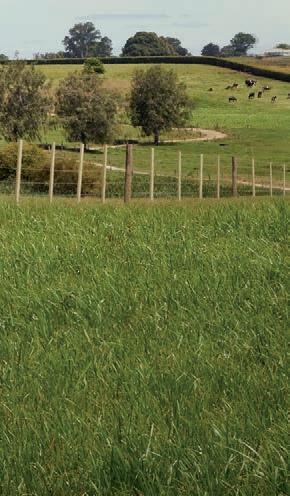
The grass is greener. 33 FARMERS WEEKLY – farmersweekly.co.nz – March 18, 2024 Markets 33
| March 7 | 2028 sheep $/kg or $/hd
ewes, all 20-70
lambs, all 90-123
cryptorchid lambs 80-90 Store wether lambs 92-95
ewe lambs 77-89 Store mixed-sex lambs 43-94 Lorneville | March 12 $/kg or $/hd R2 beef steers, 310-480kg 2.41-2.56 R2 beef heifers, 360-420kg 2.38-2.50 Weaner Friesian bulls, 180-190kg 430-470
beef heifers, 475-490kg 2.46 Prime dairy heifers, 350-420kg 1.60-1.98
ewes, all 30-87 Prime lambs, all 105-136 Southern Man | March 8 | 1303 cattle $/kg or $/hd R2 Hereford-Friesian steers, 354-489kg 2.64-2.83 R2 Angus-Friesian steers, 363-499kg 2.61-2.88 R2 Charolais-dairy steers, 421-505kg 2.68-2.71
Friesian steers, one line, 436kg 2.36
Charlton
Prime
Prime
Store
Store
Prime
Prime
R2
Angus heifers, 381-501kg 2.83-2.94
Hereford heifers, 278-357kg 2.68-2.81
exotic-cross heifers, 344-488kg 2.77-2.92
R2
Hereford-Friesian heifers, 327-439kg 2.51-2.66
Angus-Friesian heifers, 349-406kg 2.49-2.71
R2
2200 cattle $/kg or $/hd Weaner Charolais-Simmental steers, 250-300kg 1025-1230 Weaner traditional steers, 220-280kg 814-1036 Weaner Charolais-Simmental bulls, 280-320kg 1036-1184 Weaner traditional bulls, 220-280kg 770-952 Weaner Charolais-Simmental heifers, 280-310kg 868-961 Weaner traditional heifers, 240-280kg 744-868
| March 13 | 1055 cattle $/kg or $/hd Weaner Angus heifers, 214-308kg 700-960 Weaner traditional heifers, 187-311kg 660-980 Weaner exotic-cross heifers, 235-294kg 740-930 Weaner exotic-cross heifers, 215-234kg 660-750 Weaner heifers, 97-188kg 465-695 Wellsford | March 11 | 923 cattle $/kg or $/hd Aut-born yearling Angus heifers, 303-323kg 1010-1040 Weaner Angus heifers, 184-279kg 685-980 Weaner Hereford heifers, 167-257kg 670-910 Weaner Simmental-cross heifers, 181-233kg 700-790 Te Kuiti | March 7 | 861 cattle $/kg or $/hd Weaner Angus steers, 218-307kg 940-1270 Weaner Angus steers, 163-214kg 760-920 Weaner exotic, exotic-cross steers, 280-383kg 1150-1370 Weaner exotic, exotic-cross steers, 224-278kg 995-1100 Weaner exotic, exotic-cross steers, 182-222kg 760-1000 Te Kuiti | March 8 | 434 cattle $/kg or $/hd Weaner Angus heifers, 174-255kg 680-920 Weaner exotic, exotic-cross heifers, 227-291kg 790-975 Weaner exotic, exotic-cross heifers, 135-223kg 605-740 Masterton | March 12 | 1800 cattle $/kg or $/hd Weaner traditional, exotic-cross steers, heavy 1190-1420 Weaner traditional, exotic-cross steers, good 950-1090 Weaner traditional, exotic-cross steers, small to medium 800-950 Weaner Simmental-cross bulls 1090-1410 Masterton | March 13 | 550 cattle $/kg or $/hd Weaner traditional, exotic-cross heifers, heavy 870-900 Weaner traditional, exotic-cross heifers, good 720-800 Weaner traditional, exotic-cross heifers, small to medium 570-650
AgriHQ market trends
Cattle Sheep Deer
Fertiliser
Forestry
LIE.
Don’t worry, your tractor won’t suspect a thing.






The grass is greener. 34 FARMERS WEEKLY – farmersweekly.co.nz – March 18, 2024 Markets 34
Sheep Meat Slaughter price (NZ$/kgCW) Last week Last year North Island lamb (18kg) 6.10 7.15 North Island mutton (25kg) 2.70 4.00 South Island lamb (18kg) 6.00 6.85 South Island mutton (25kg) 2.50 3.70 Export markets (NZ$/kg) China lamb flaps 8.44 11.22 Wool (NZ$/kg clean) 01-Mar Last year Crossbred fleece 3.17 2.77 Crossbred lamb 3.20 3.20 Courtesy of www.fusca.co.nz Beef Slaughter price (NZ$/kgCW) Last week Last year North Island P2 steer (300kg) 5.80 5.95 North Island M2 bull (300kg) 5.85 5.80 North Island M cow (190kg) 3.95 4.15 South Island P2 steer (300kg) 5.35 5.30 South Island M2 bull (300kg) 5.40 5.20 South Island M cow (190kg) 3.80 3.65 Export markets (NZ$/kg) US imported 95CL bull 9.66 9.68 US domestic 90CL cow 11.65 9.56 Venison Slaughter price (NZ$/kgCW) Last week Last year North Island AP stag (60kg) 8.70 8.80 South Island AP stag (60kg) 8.65 8.80 Fertiliser NZ average (NZ$/tonne) Last week Last year DAP 1264 1594 Super 474 442 Urea 897 1135 Urea (Coated) 946 1184 Exports NZ Log Exports (tonnes) Jan Last year China 1,329,909 1,041,421 Rest of world 89,317 149,487 Carbon price (NZ$/tonne) Last week Last year NZU 66.0 66.8
slaughter price ($/kgCW)
slaughter price ($/kgCW)
lamb exports (Dec - Feb, thous. tonnes)
Slaughter price ($/kgCW)
beef exports (Dec - Feb, thous. tonnes)
provided
NOTE: Slaughter values are weighted average gross operating prices including premiums but excluding breed premiums for cattle. 5.0 5.5 6.0 6.5 Mar May Jul Sep Nov Jan North Island South Island 5.5 6.0 6.5 7.0 7.5 8.0 Mar May Jul Sep Nov Jan North Island South Island 8.0 8.5 9.0 9.5 10.0 Mar May Jul Sep Nov Jan North Island South Island 0 10 20 30 40 50 60 China Japan S. Korea Rest of Asia US Other Last year This year 0 10 20 30 40 China EU Mid. East UK US Other Last year This year
Steer
Lamb
NZ
Stag
NZ
Data
by






Don’t worry, your tractor will find love again. The grass is greener. BREAK UP. 35 FARMERS WEEKLY – farmersweekly.co.nz – March 18, 2024 Markets 35
Company Close YTD High YTD Low ArborGen Holdings Limited 0.153 0.173 0.149 The a2 Milk Company Limited 6.34 6.54 4.25 Cannasouth Limited 0.114 0.152 0.099 Comvita Limited 2.44 2.66 1.71 Delegat Group Limited 5.98 6.9 5.68 Fonterra Shareholders' Fund (NS) 3.54 3.6 3.34 Foley Wines Limited 1.02 1.2 1.02 Greenfern Industries Limited 0.035 0.058 0.035 Livestock Improvement Corporation Ltd (NS) 1.07 1.11 0.98 Marlborough Wine Estates Group Limited 0.164 0.18 0.155 NZ King Salmon Investments Limited 0.27 0.305 0.225 PGG Wrightson Limited 2.09 3.44 2.06 Rua Bioscience Limited 0.075 0.121 0.072 Sanford Limited (NS) 3.79 4.14 3.76 Scales Corporation Limited 3.1 3.49 3 Seeka Limited 2.74 2.87 2.42 Synlait Milk Limited (NS) 0.75 1 0.68 T&G Global Limited 1.79 2 1.73 S&P/NZX Primary Sector Equity Index 10428 10623 9961 S&P/NZX 50 Index 11809 11952 11571 S&P/NZX 10 Index 11960 12254 11672
shares
Dairy Futures (US$/t) Nearest contract Last price* Prior week 4 weeks prior WMP 3180 3185 3415 SMP 2570 2725 2850 AMF 6600 6300 6150 Butter 6200 6300 6350 Milk Price 7.80 7.78 7.94 * price as at close of business on Wednesday
Canterbury feed wheat ($/tonne) 5pm, Wednesday Milk price futures ($/kgMS)
feed barley ($/tonne)
palm kernel ($/tonne) WMP futures - vs four weeks ago (US$/tonne) S&P/NZX 10 INDEX 11960 S&P/NZX PRIMARY SECTOR EQUITY 10428 S&P/NZX 50 INDEX 11809 6.5 7.5 8.5 9.5 Mar May Jul Sep Nov Jan Mar Sep-2024 Sep-2025 400 450 500 550 600 650 Feb Apr Jun Aug Oct Dec Feb 400 450 500 550 600 Feb Apr Jun Aug Oct Dec Feb 2800 2900 3000 3100 3200 3300 3400 3500 Mar Apr May Jun Jul Latest price 4 weeks ago 300 350 400 450 Feb Apr Jun Aug Oct Dec Feb
NZX market trends
Close of market Listed Agri
Grain Dairy
Data provided by
Canterbury
Waikato
Equinox fires the starting gun on autumn
 Philip Duncan NEWS Weather
Philip Duncan NEWS Weather
THIS week is the autumn equinox. At precisely 4:06pm on Wednesday, March 20, is when it occurs.
To many, this marks the official start of autumn and certainly from a physical point of view many plants start to change now. Right now we have basically equallength days and nights, but in the weeks ahead the nights become longer and the days shorter.
The cooler mornings are certainly being welcomed by many who find summer nights too hot for sleeping in some regions. Parts of the country are basically in drought.
The way droughts are announced in New Zealand can be slow and clunky. Last year when forecasters were looking for the likely peak of the dry weather from El Niño it was expected by us (and others overseas) that late summer and early autumn might be the driest point.
Droughts – or big dries, or whatever you want to name these

dry periods – end in NZ in two ways.
Either one big rain event comes in and reverses everything in a day or two, or – as is often the case –the ending is death by paper cuts. By that I mean over the next few months we have so many showers that eventually they cumulate to bring normality back to most places.
Around NZ it’s hit and miss as to who is dry. In recent weeks we’ve seen some very stubborn dry weather, but we have also had downpours and a few showers.
The regions around NZ have a variety of conditions – some parts are about right for this time of year, others wetter, many others drier, all within the same one region. But it’s safe to say that much of the eastern side of NZ is drier than normal.
Soil moisture maps lately look like classic El Niño with the dry weather to the north and east of both main islands but wetter in the west.
Our forecast for March was one of a lot of dry weather and cold fronts trying to move in. But as we head towards April we’re seeing the speed wobbles come back into


The way droughts are announced in New Zealand can be slow and clunky.
the high-pressure belt. Instead of it looking like a straight line from west to east, they are moving around more and we’re seeing breaks, which will allow some low pressure and wet weather to move through.
Will this line up to bring relief
to your property? That’s harder to say. But certainly the highs look to be “wobbling” around a bit and that gives wiggle room to low pressure, showers and rain bands.
The tropics is also very active –and while we need these stubborn highs to break up further, the right timing of that can allow a tropical low to drop south. In short, we have some wet weather slowly returning going into April, scattered across both islands, but still plenty of dry this week.
CHAOS: It’s not locked in, but this potential set-up on Sunday shows how lows can grow when the highs are spaced far enough apart. This usually happens more once past the equinox when, traditionally, more chaos comes into our weather patterns.
Highlights this week
• Southerly flow kicks off this week
• High pressure moves in, centred over the South Island on Tuesday
• High pressure dominates much of NZ this week
• Low pressure may form over NZ this weekend bringing rain relief to some – not locked in
Kirk’s tyres just saved the planet.







TYREWISE.CO.NZ
36 Weather ruralweather.co.nz

 FNigel Stirling MARKETS Trade
FNigel Stirling MARKETS Trade























 Neal Wallace NEWS Weather
Neal Wallace NEWS Weather





 Annette Scott PEOPLE Food and bre
Annette Scott PEOPLE Food and bre







 Gerald Piddock MARKETS Dairy
Gerald Piddock MARKETS Dairy
















 Suz Bremner MARKETS Livestock
Suz Bremner MARKETS Livestock












 Richard Rennie in Melbourne NEWS
Richard Rennie in Melbourne NEWS





















































































 Craig Page Deputy editor
Craig Page Deputy editor


 Alan Emerson Semi-retired Wairarapa farmer and businessman: dath.emerson@gmail.com
Alan Emerson Semi-retired Wairarapa farmer and businessman: dath.emerson@gmail.com


 Keith Woodford MD at AgriFood Systems kbwoodford@gmail.com
Keith Woodford MD at AgriFood Systems kbwoodford@gmail.com









































































































































































 Sara Hilhorst MARKETS Livestock
Sara Hilhorst MARKETS Livestock
























 Philip Duncan NEWS Weather
Philip Duncan NEWS Weather









